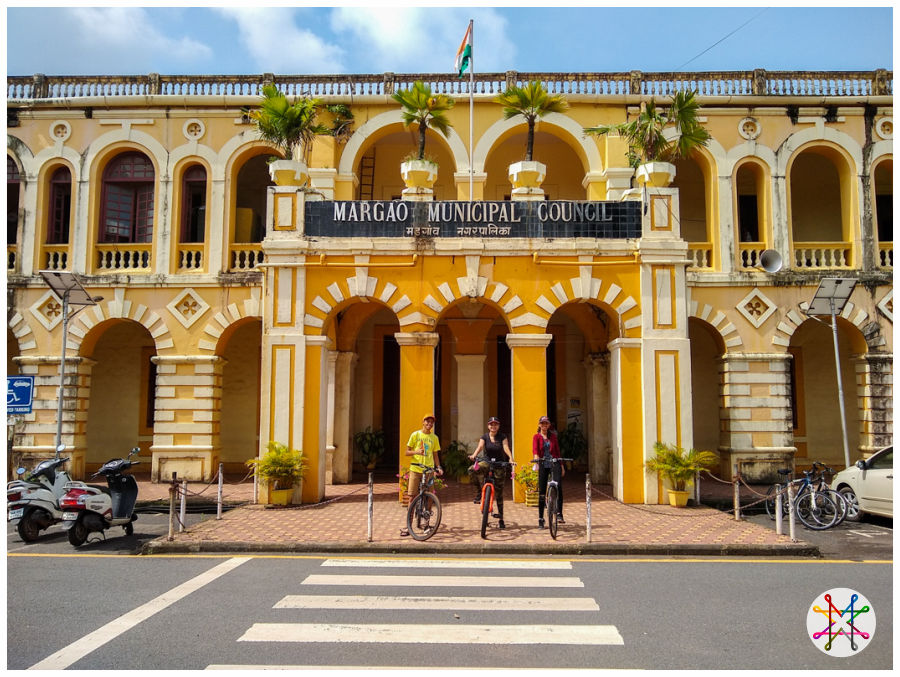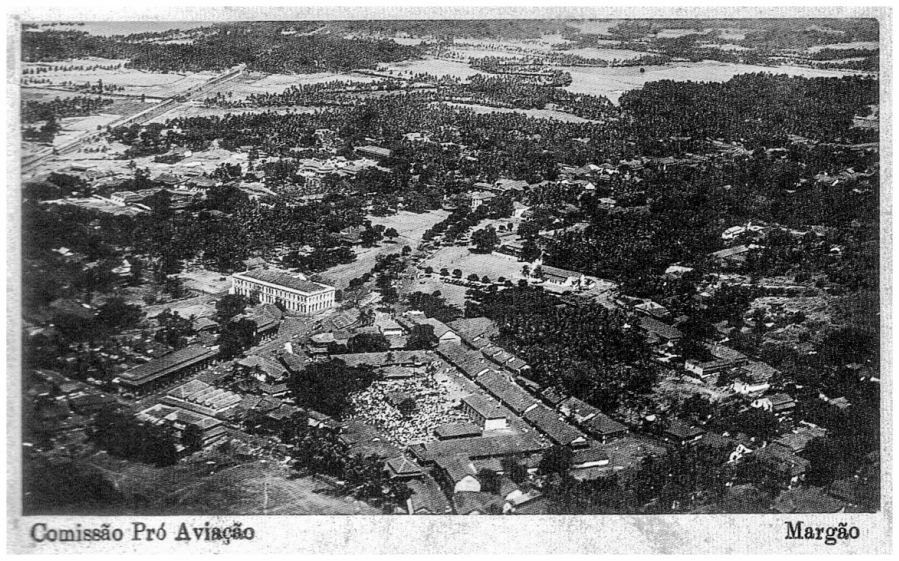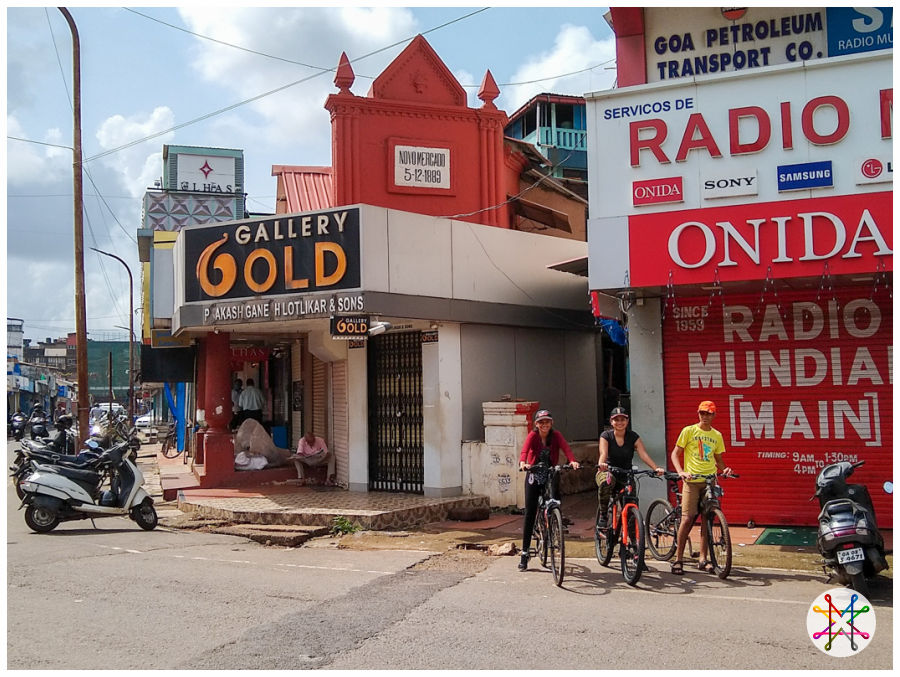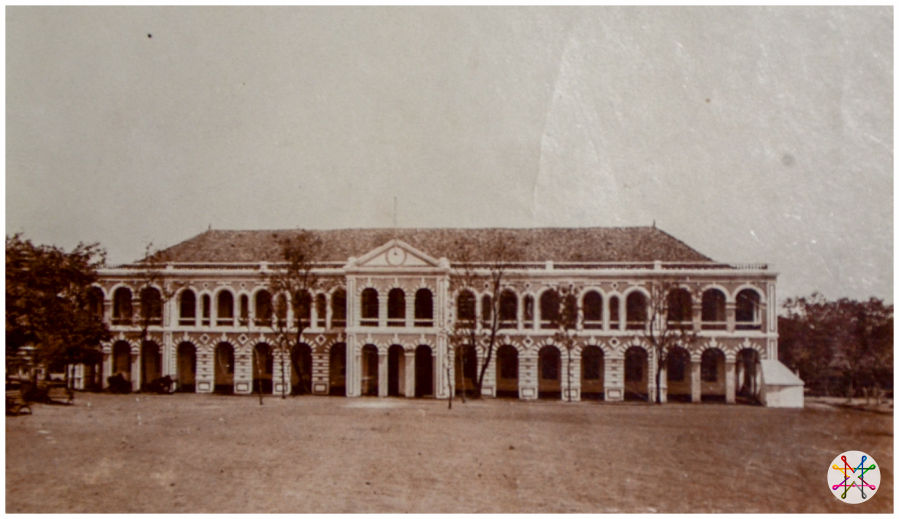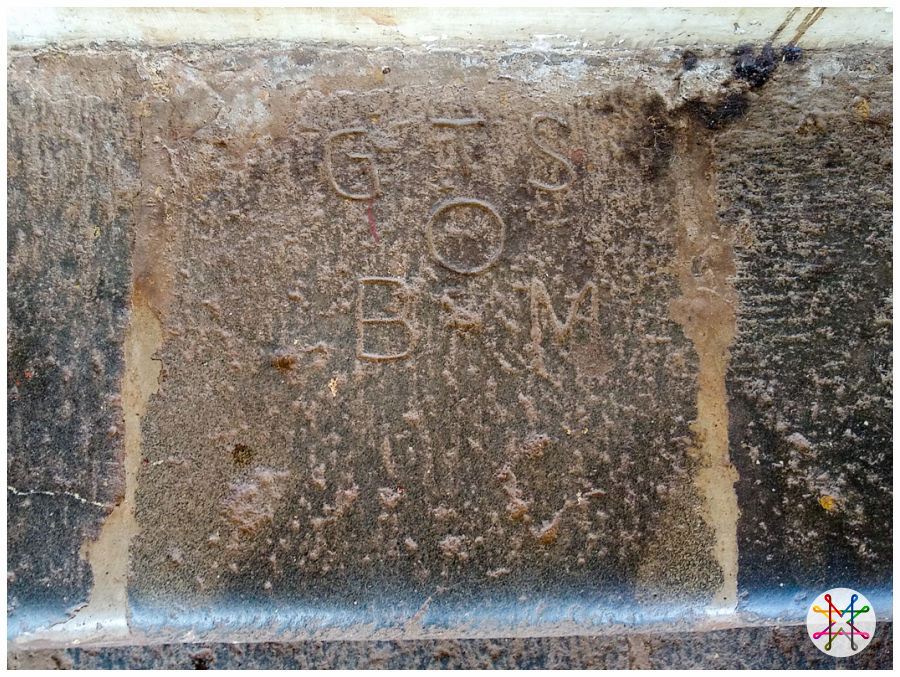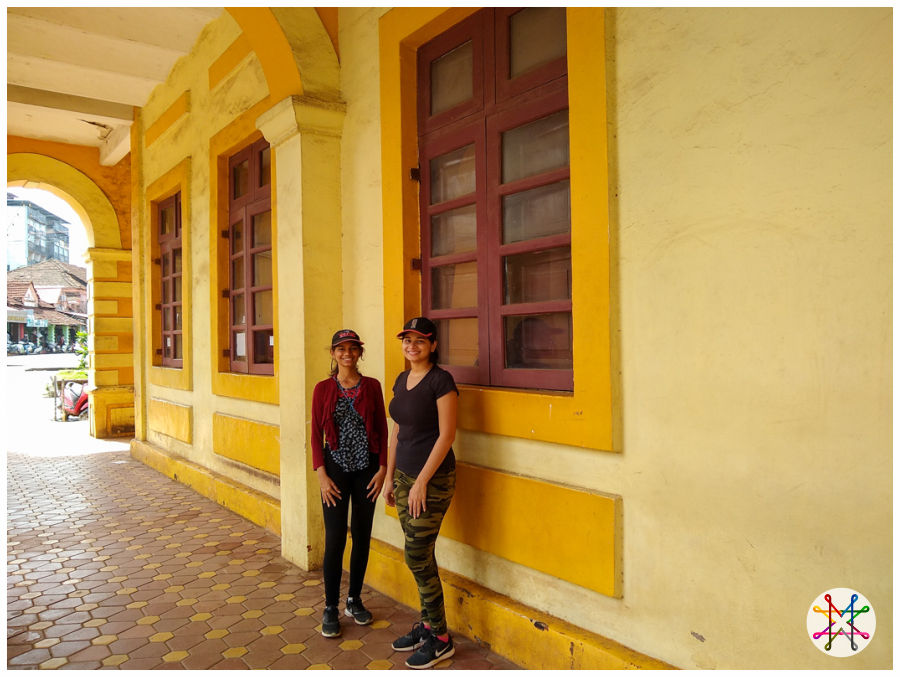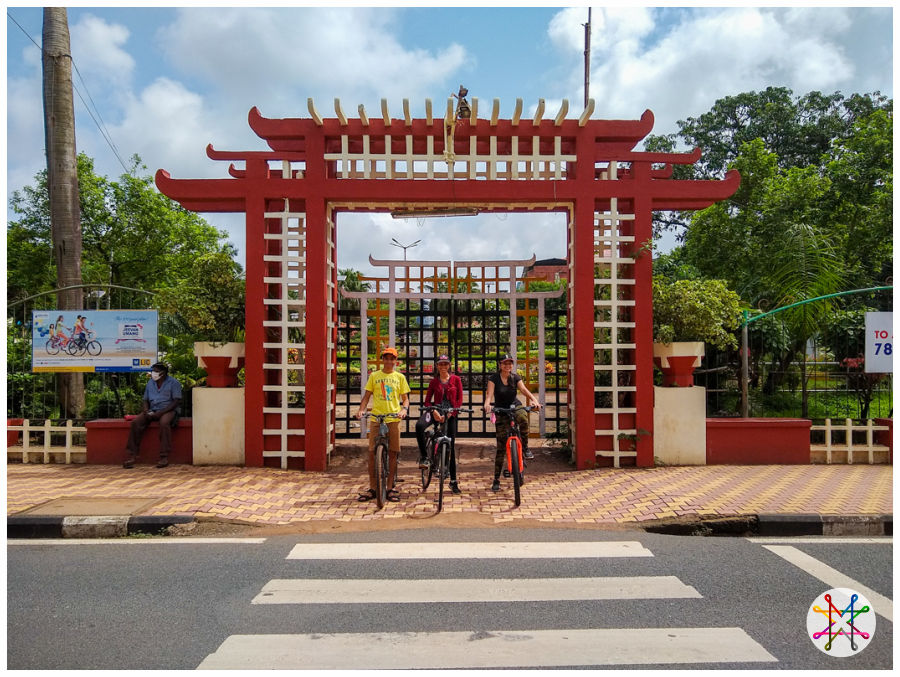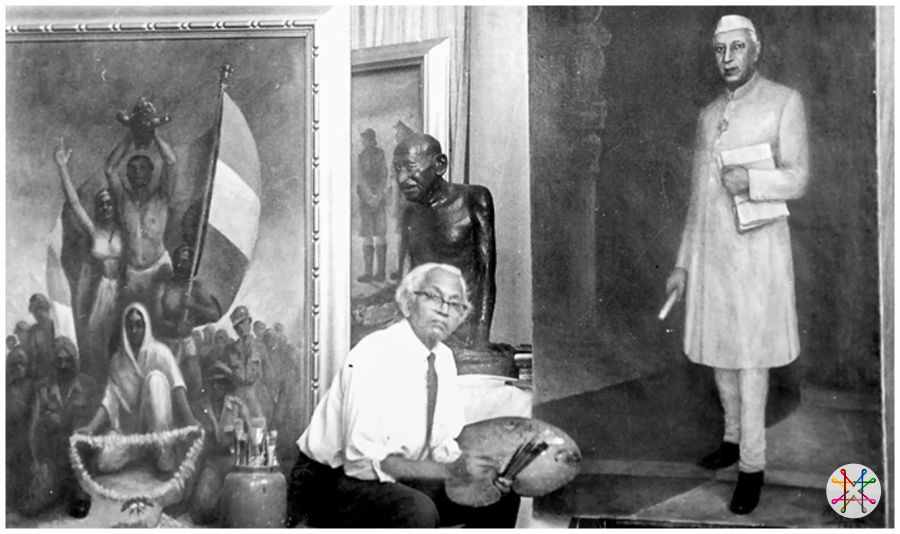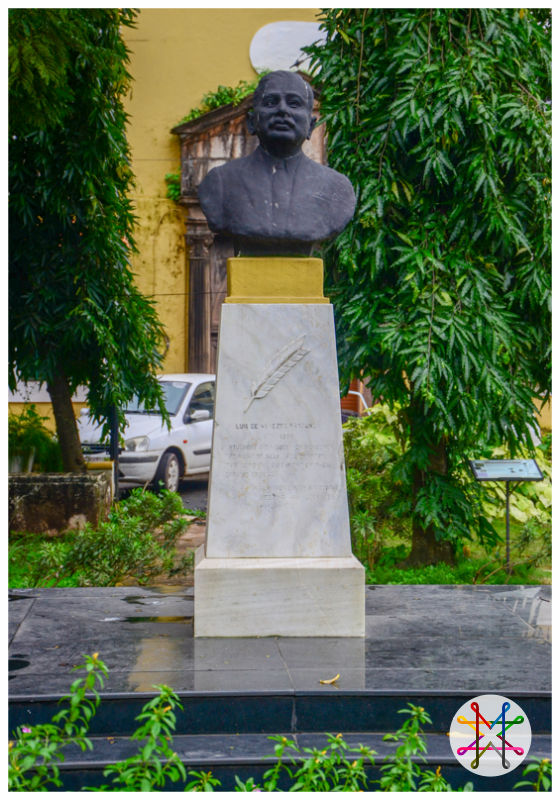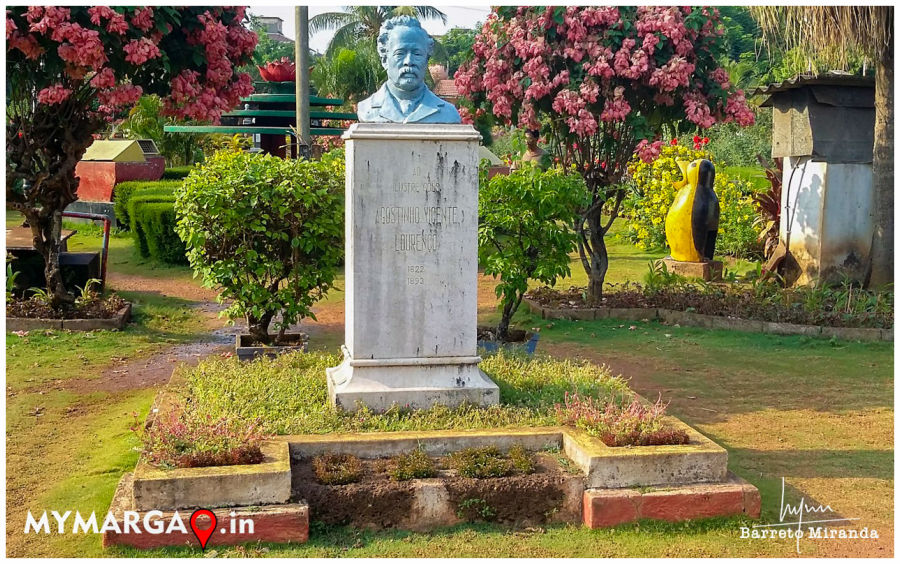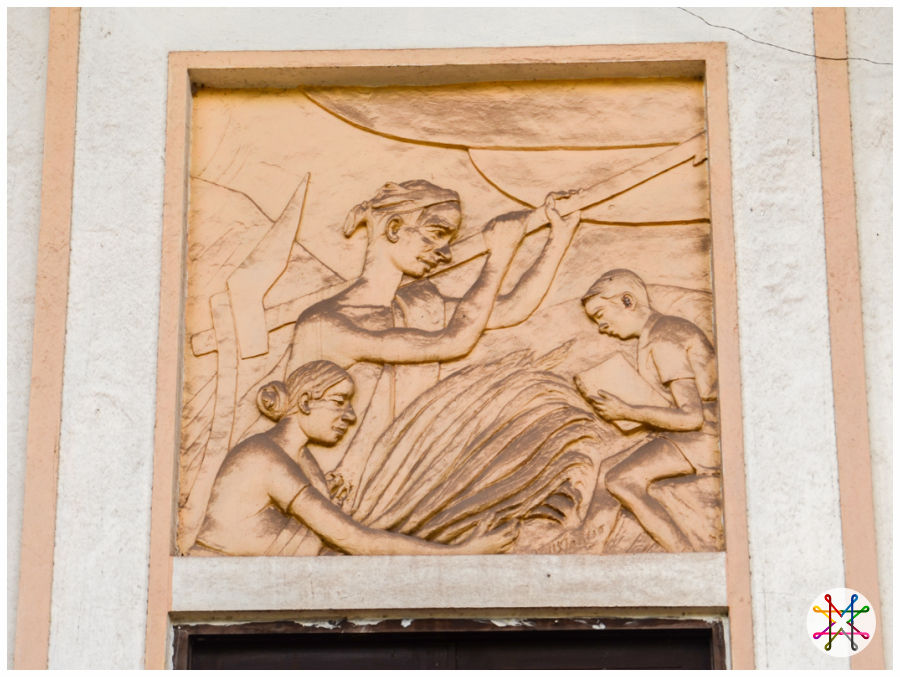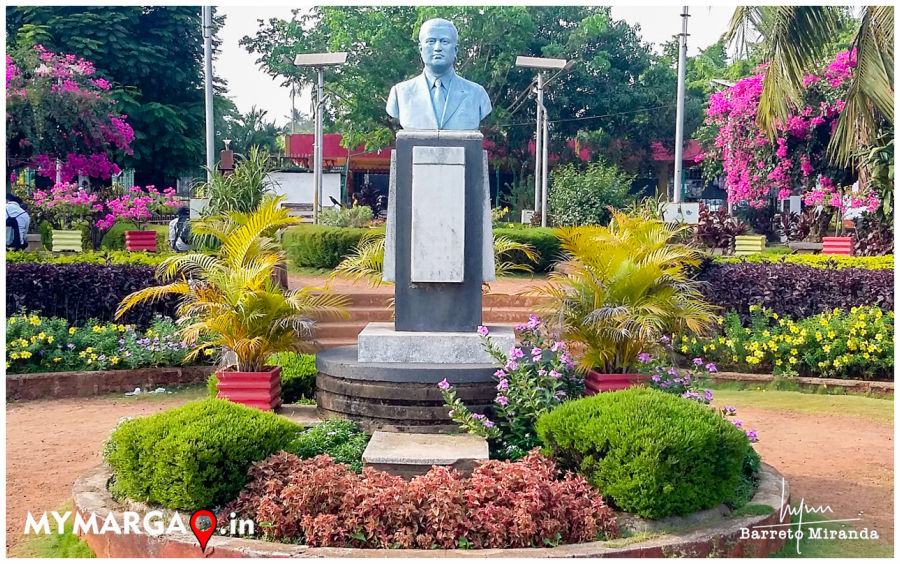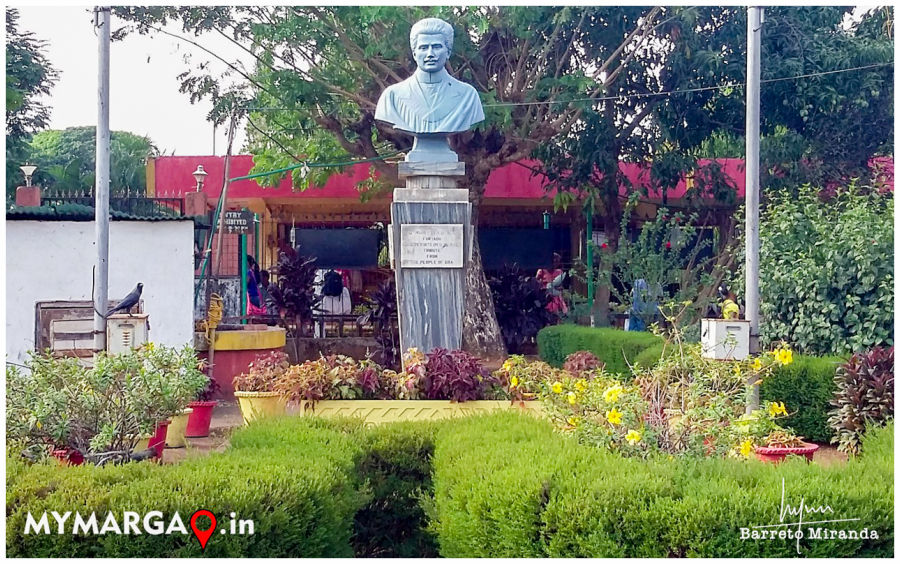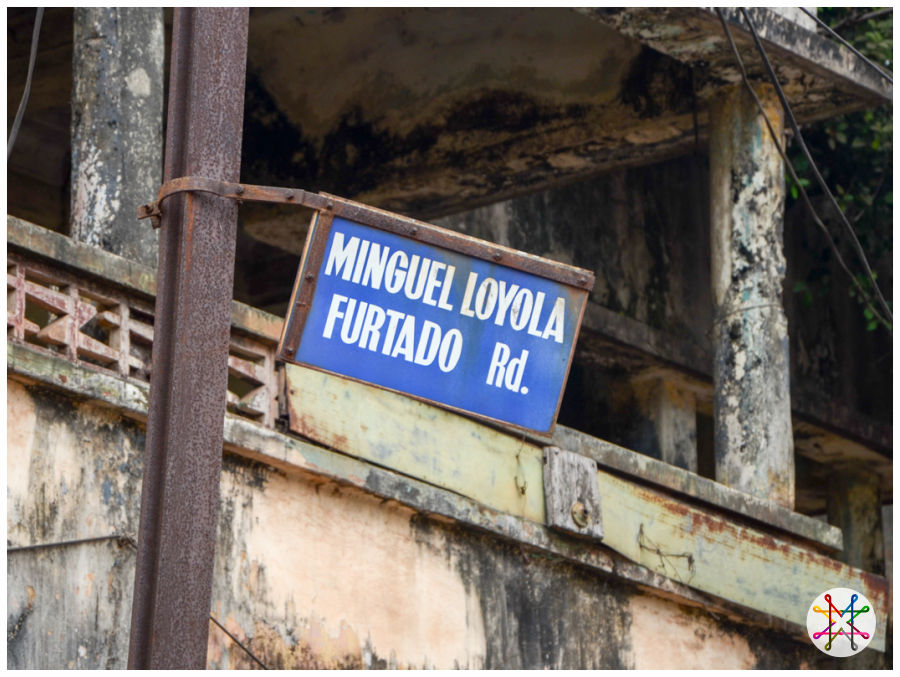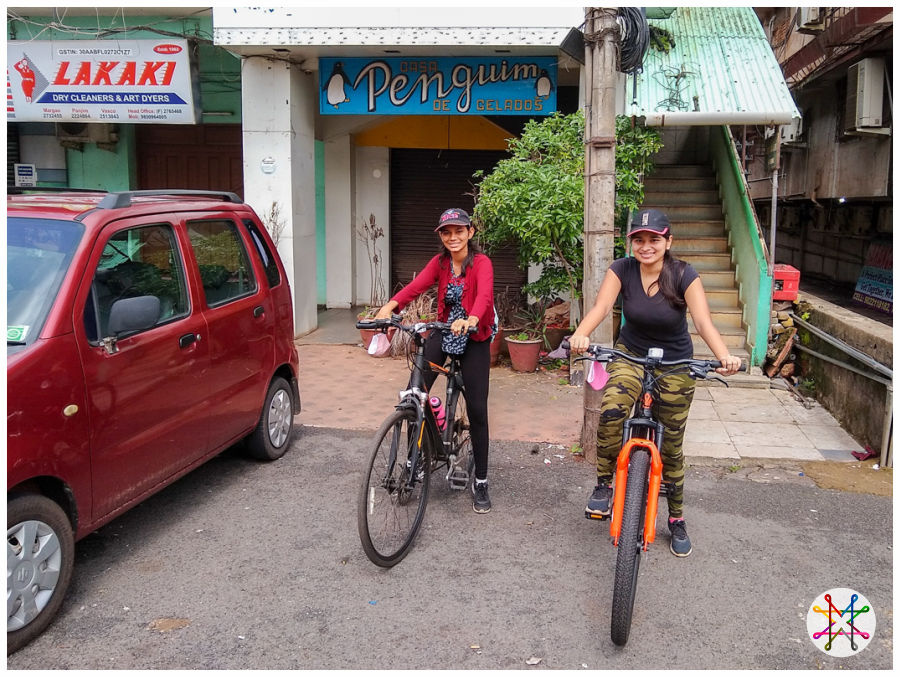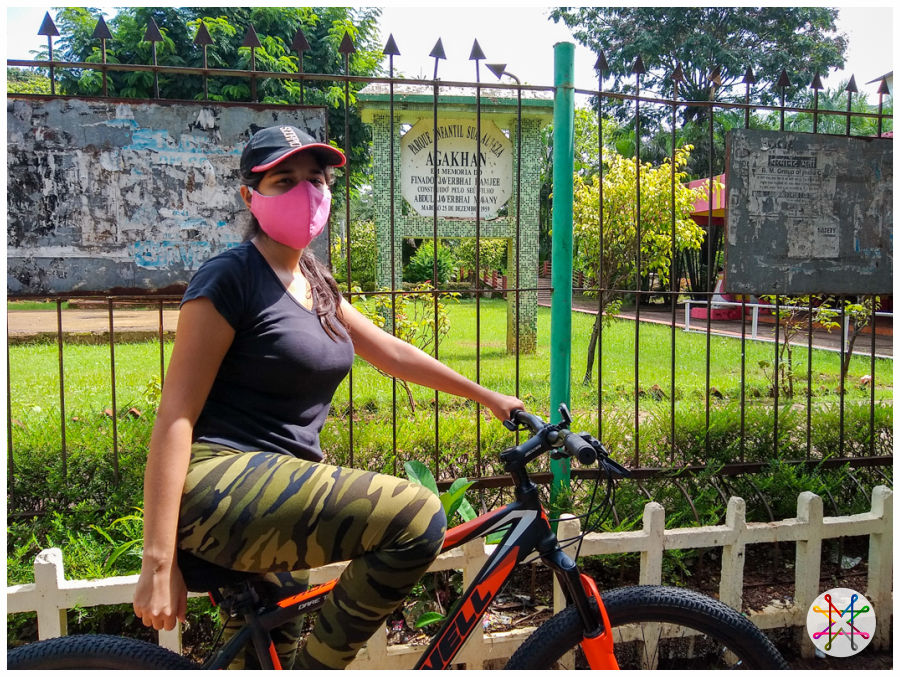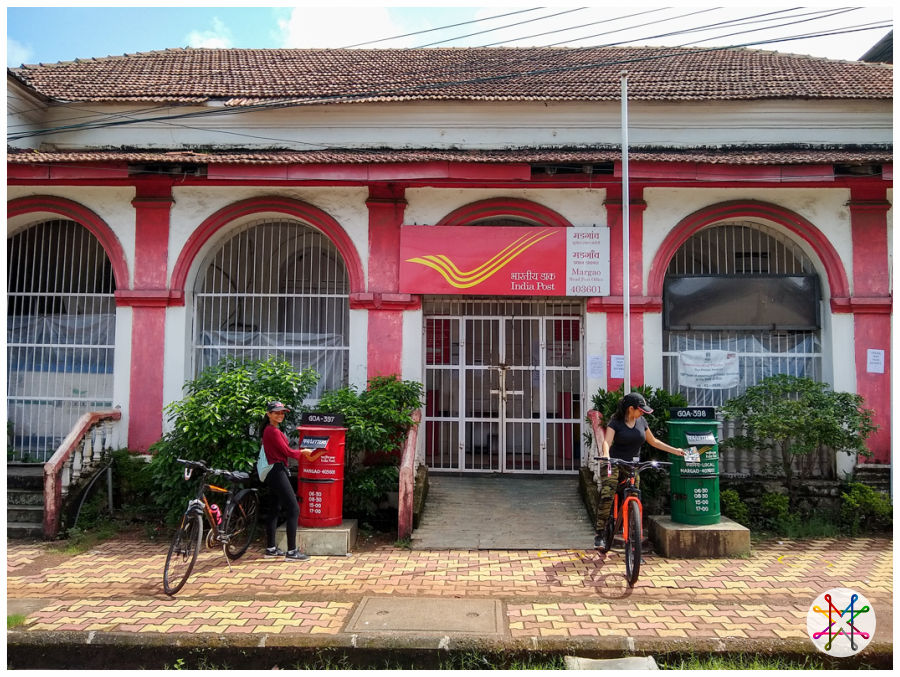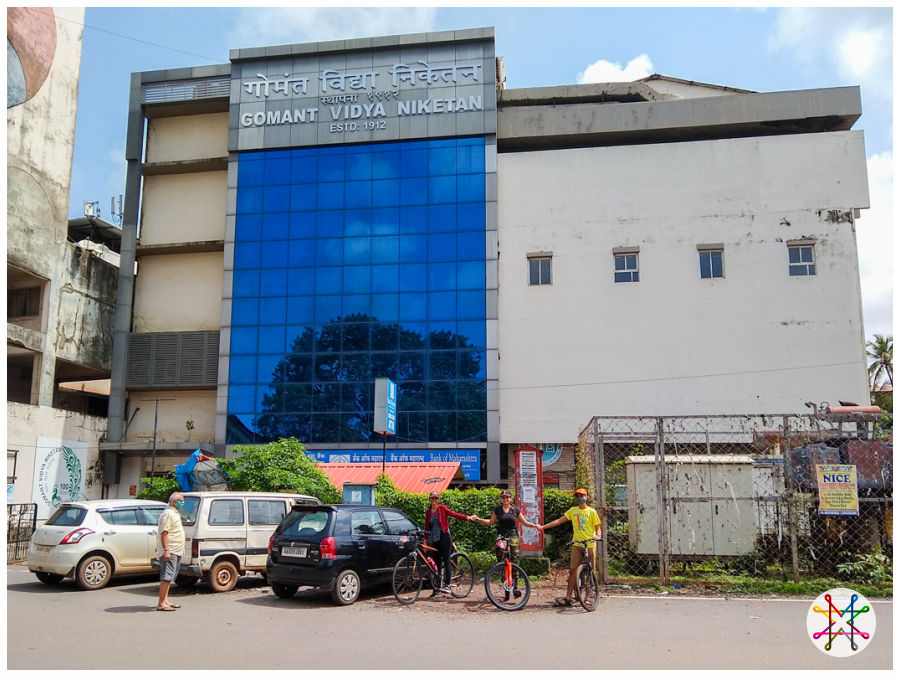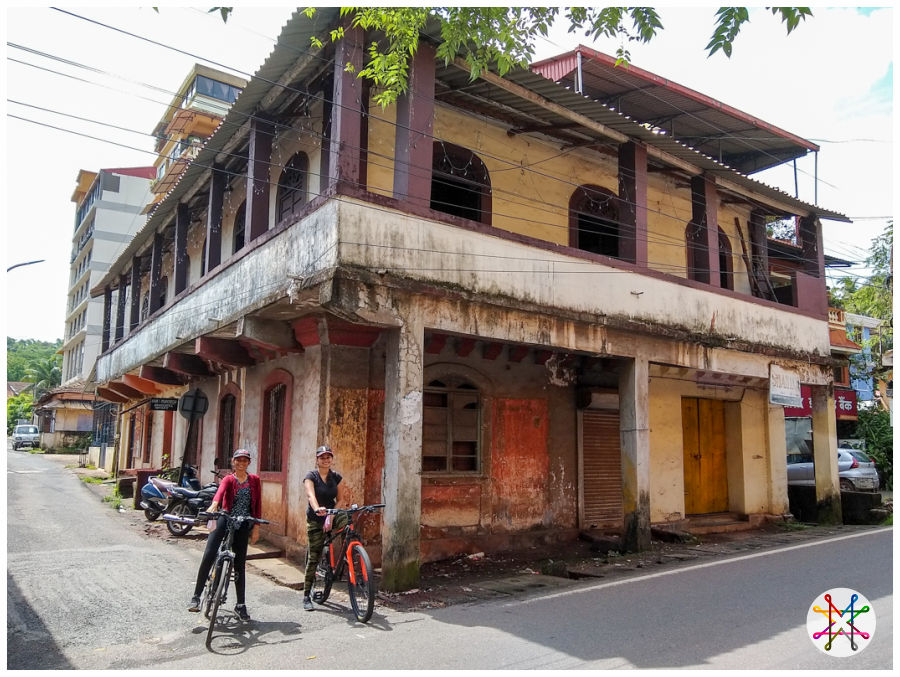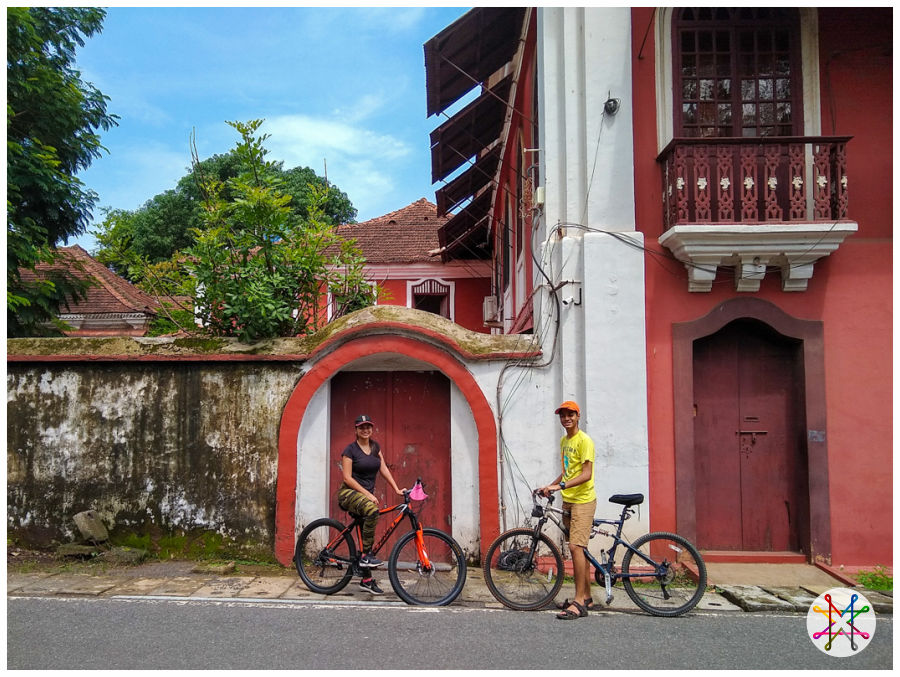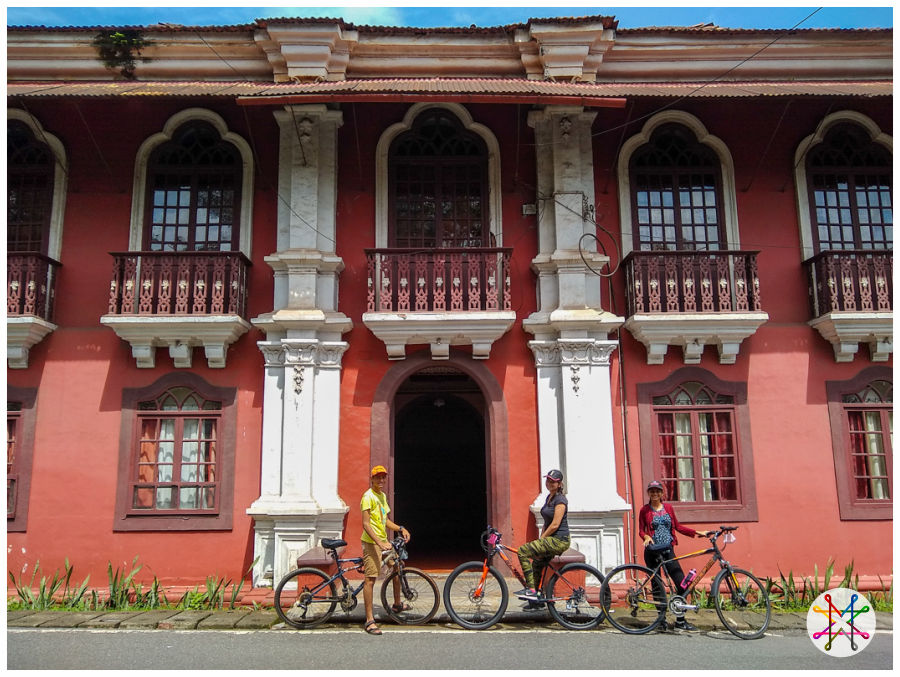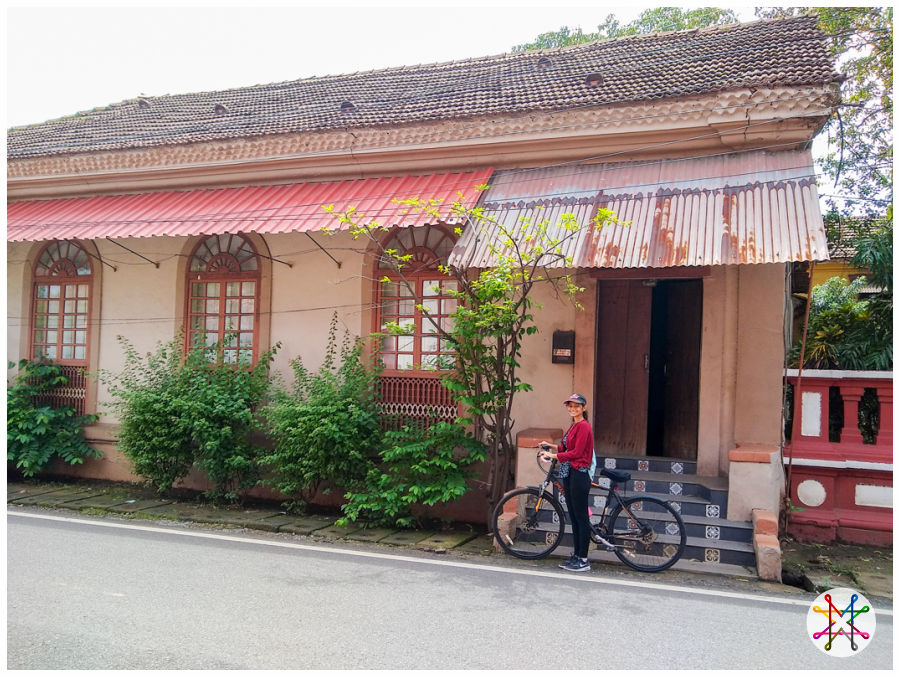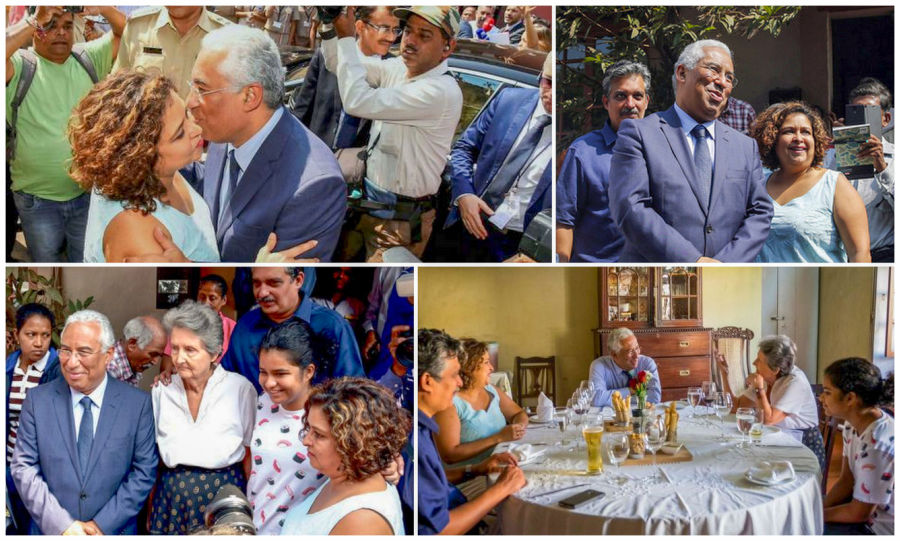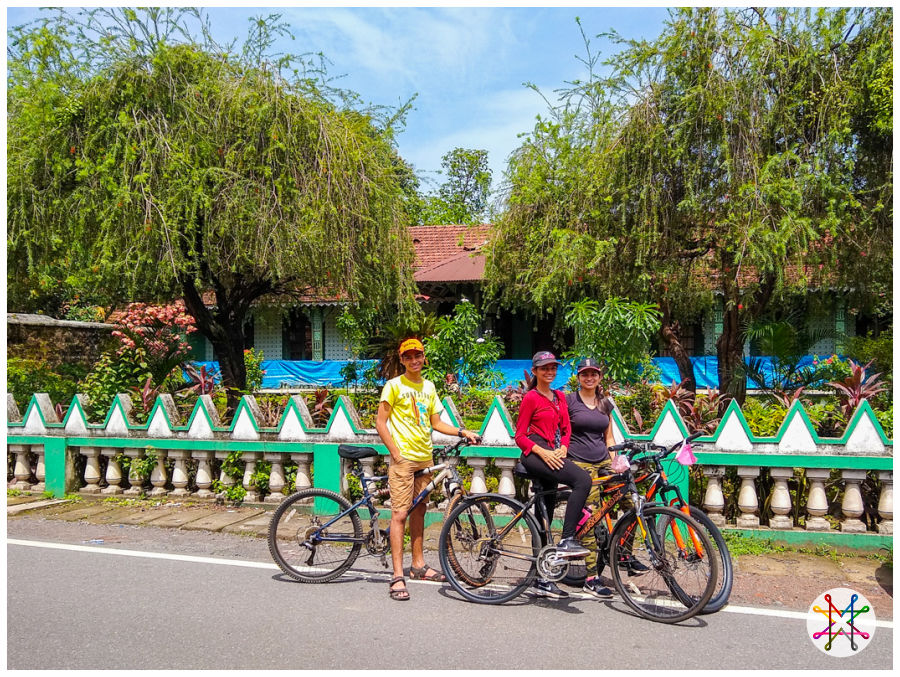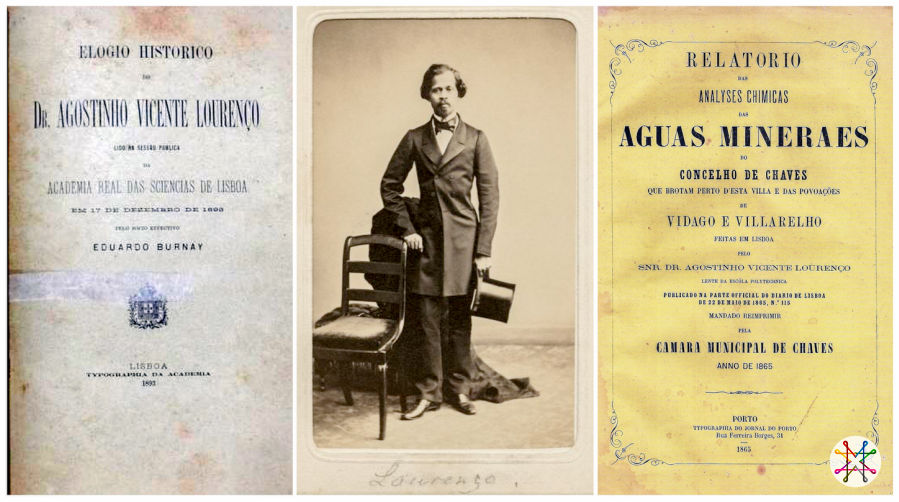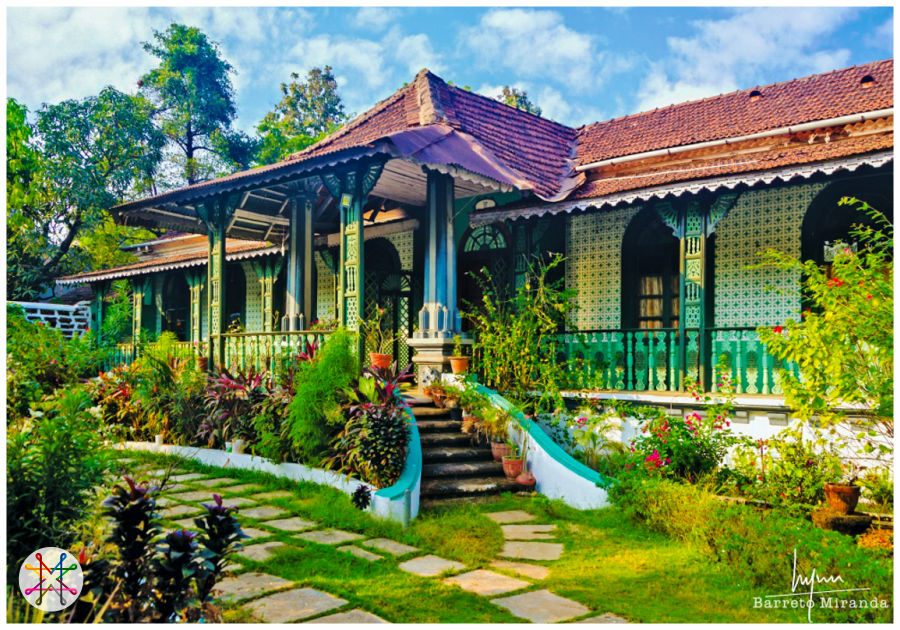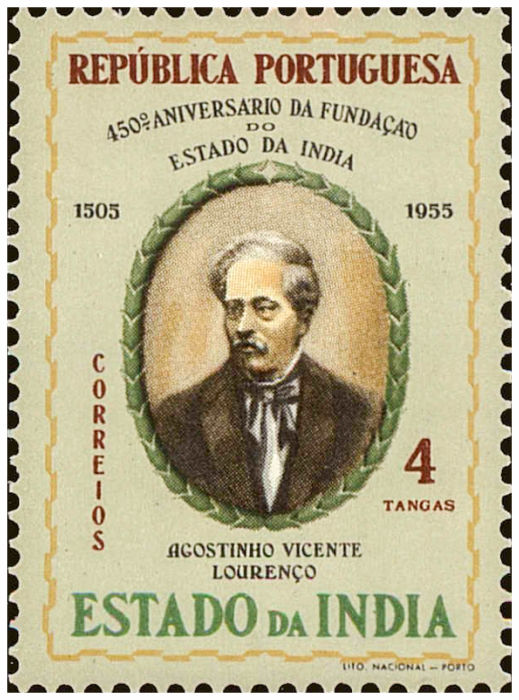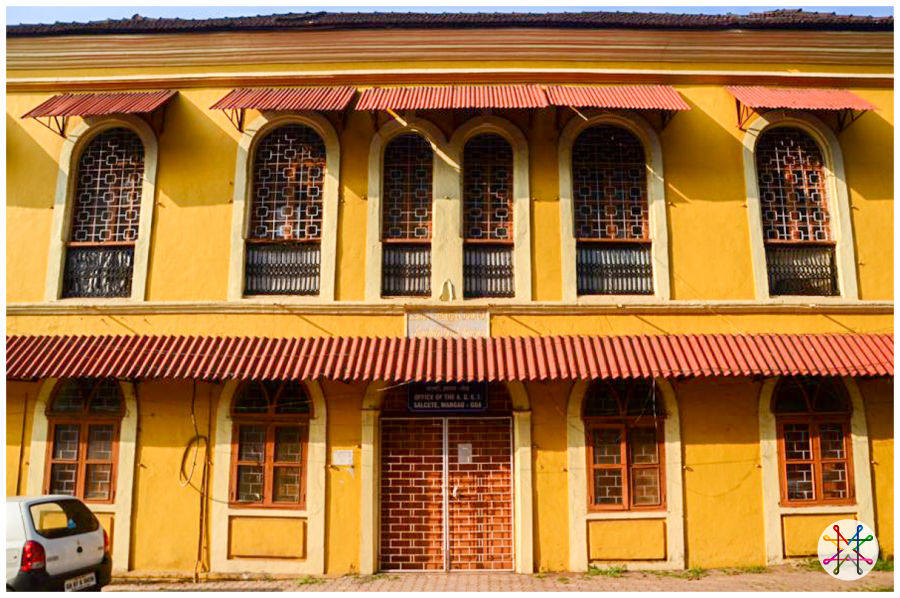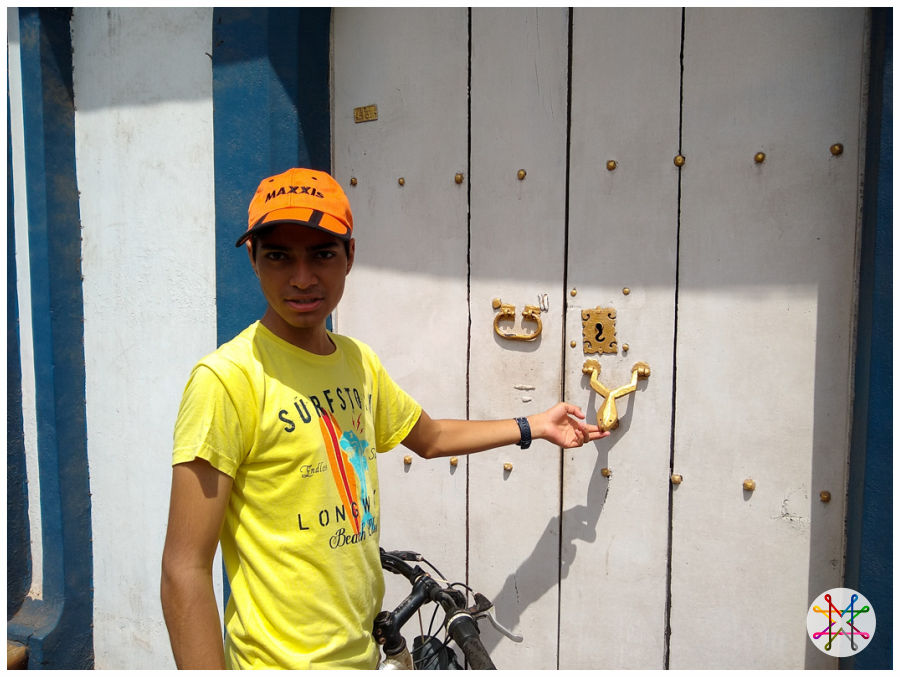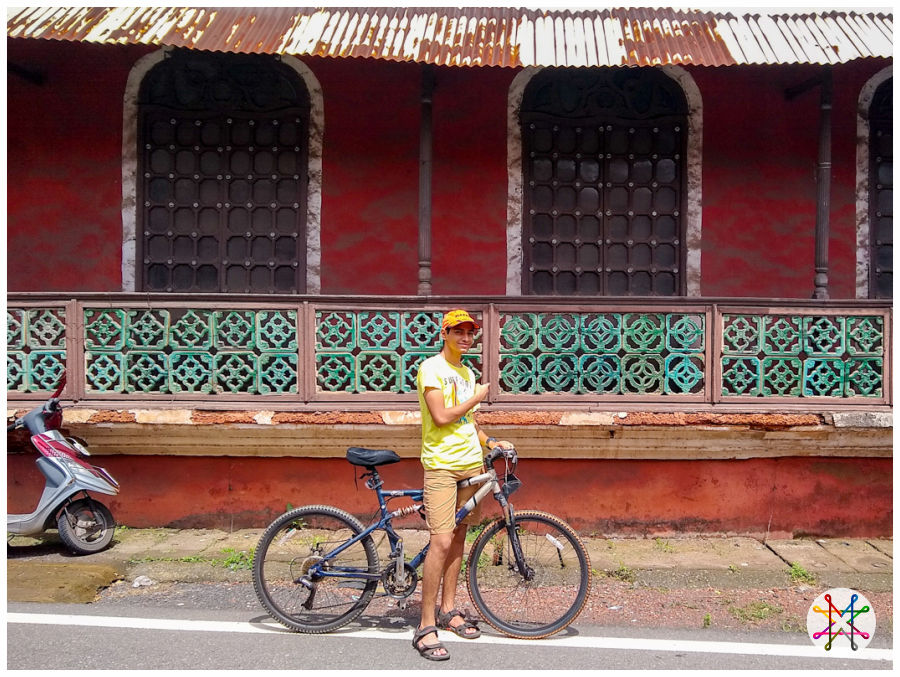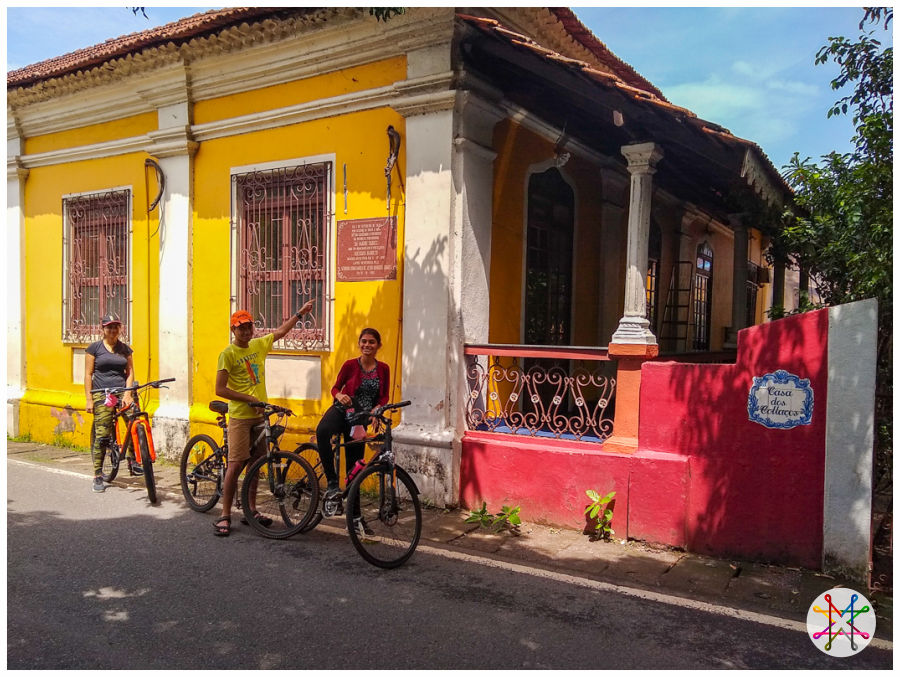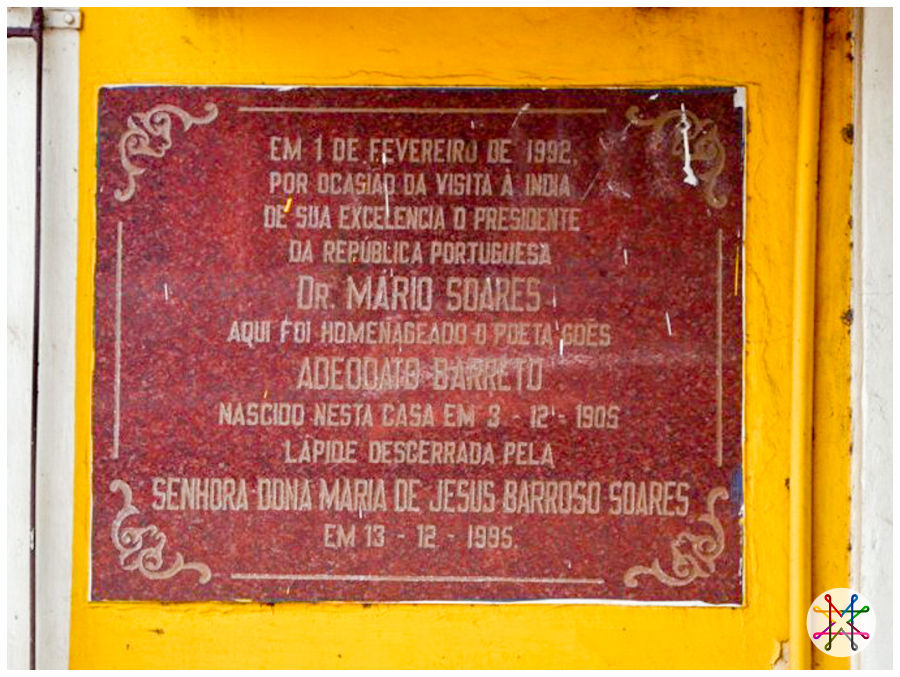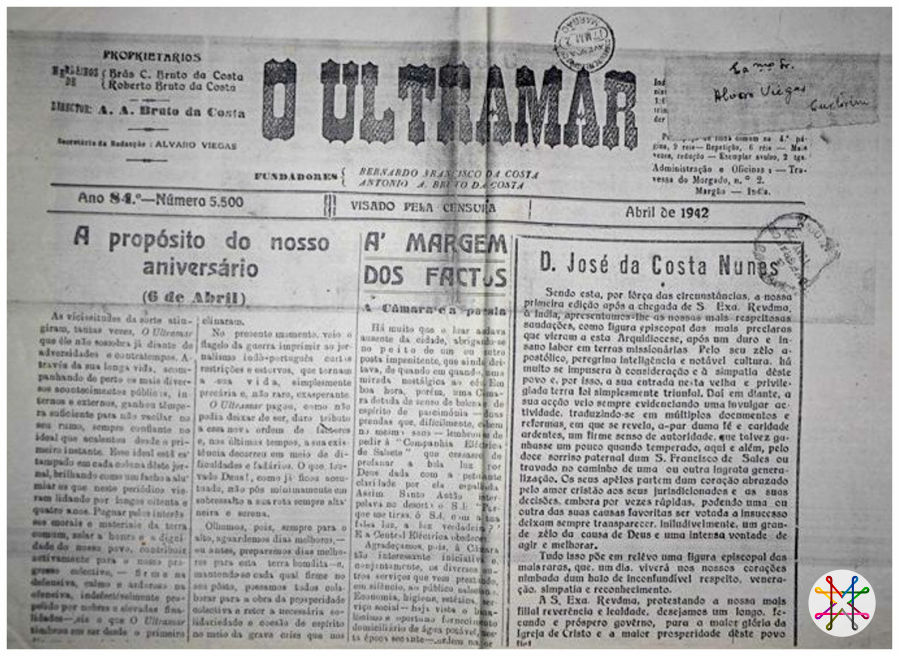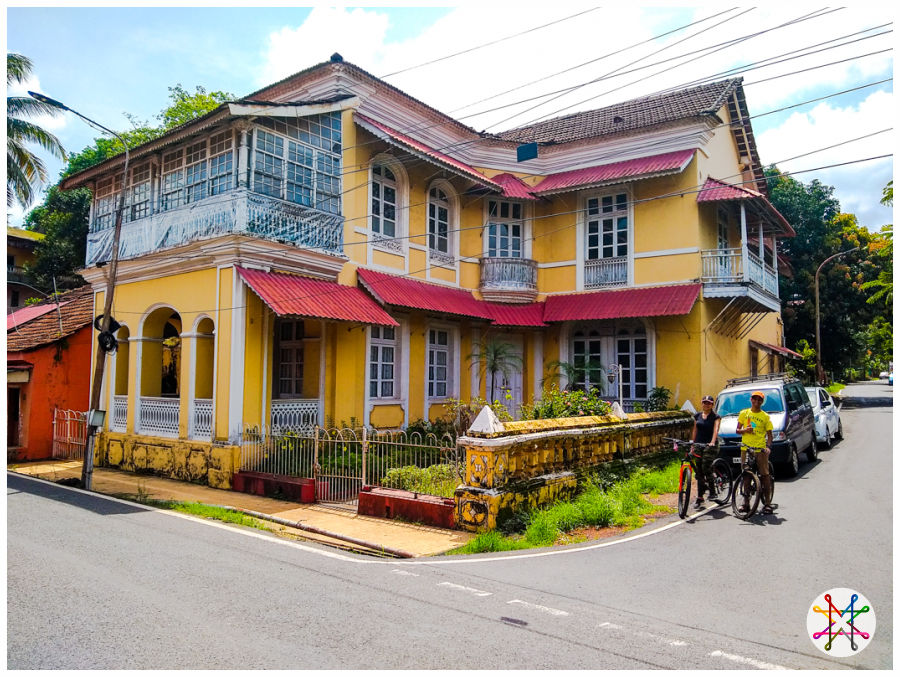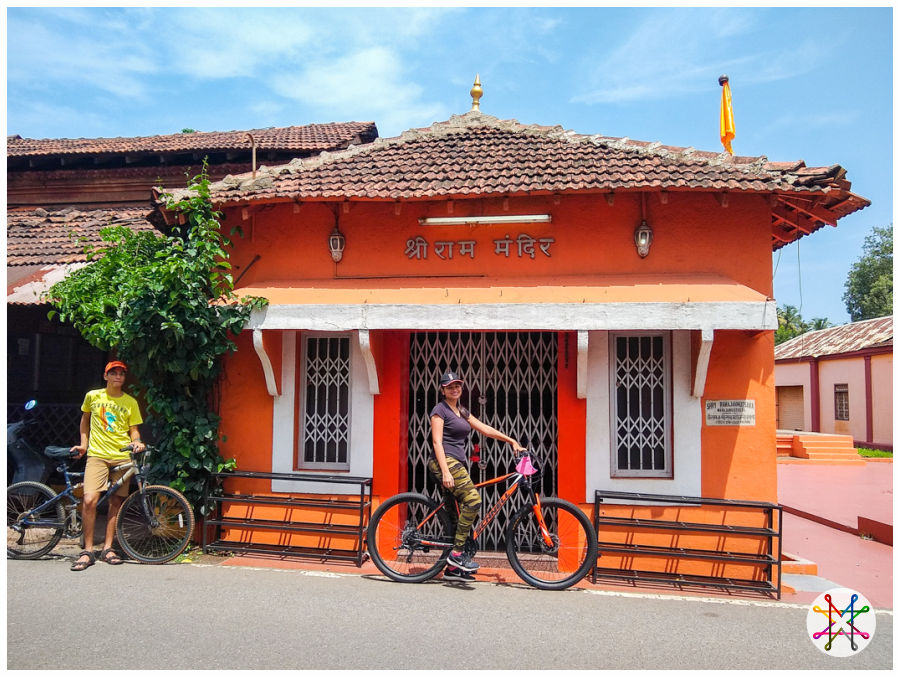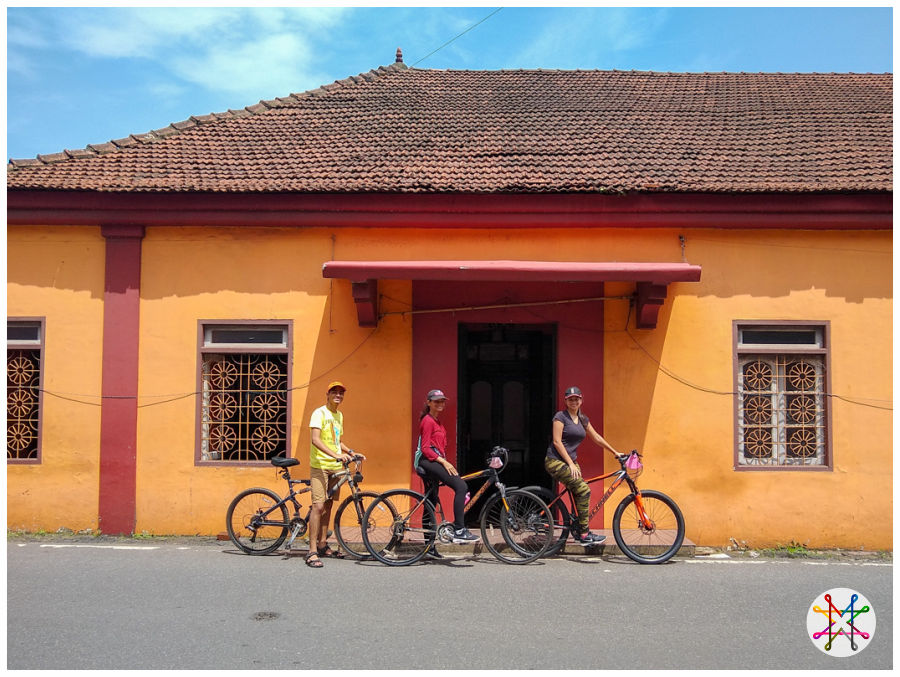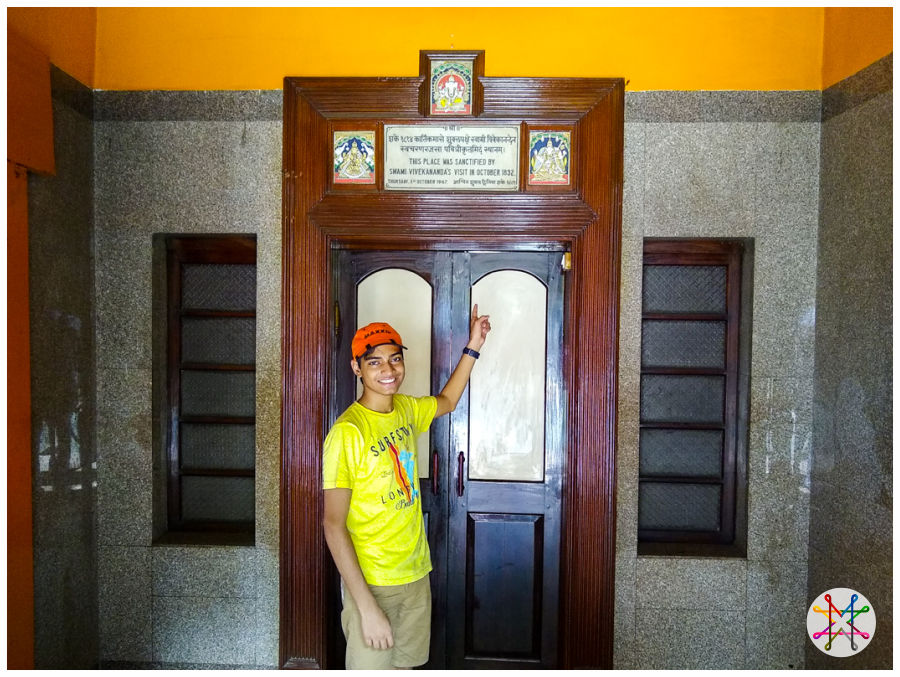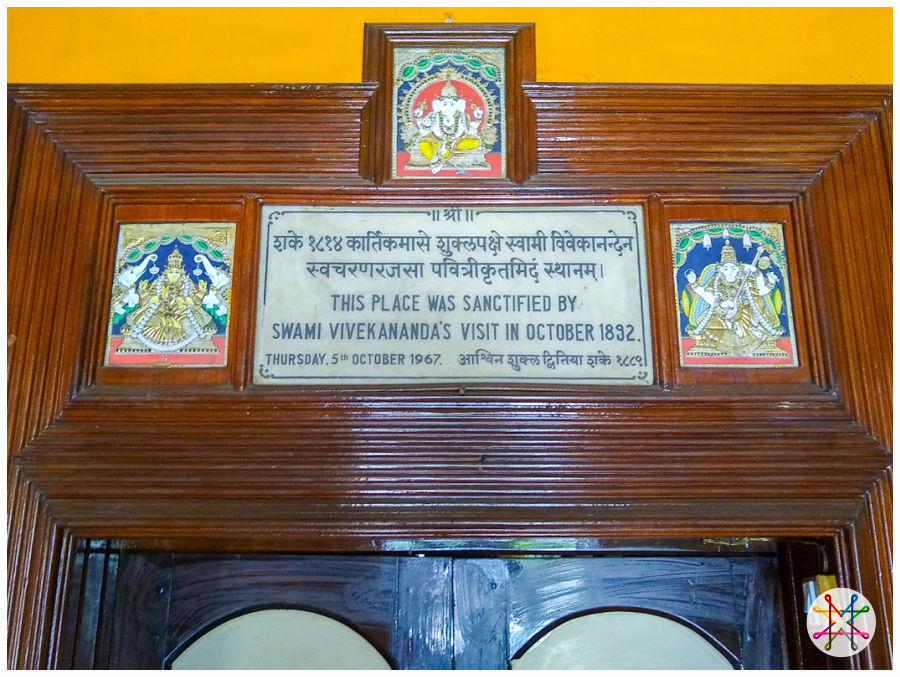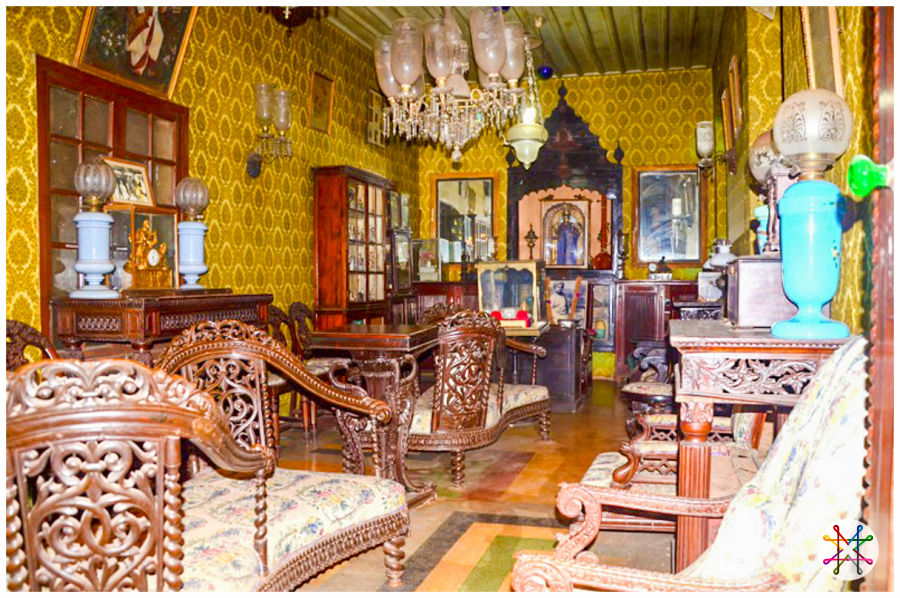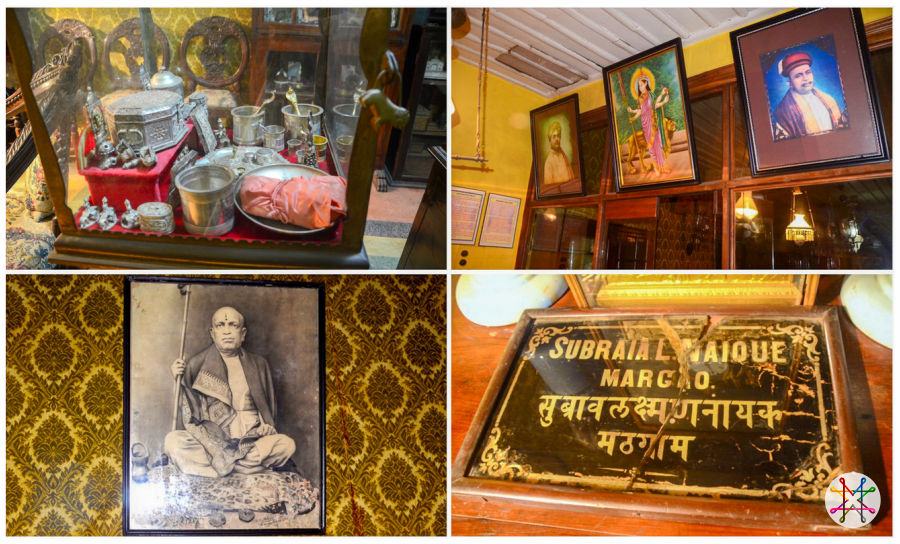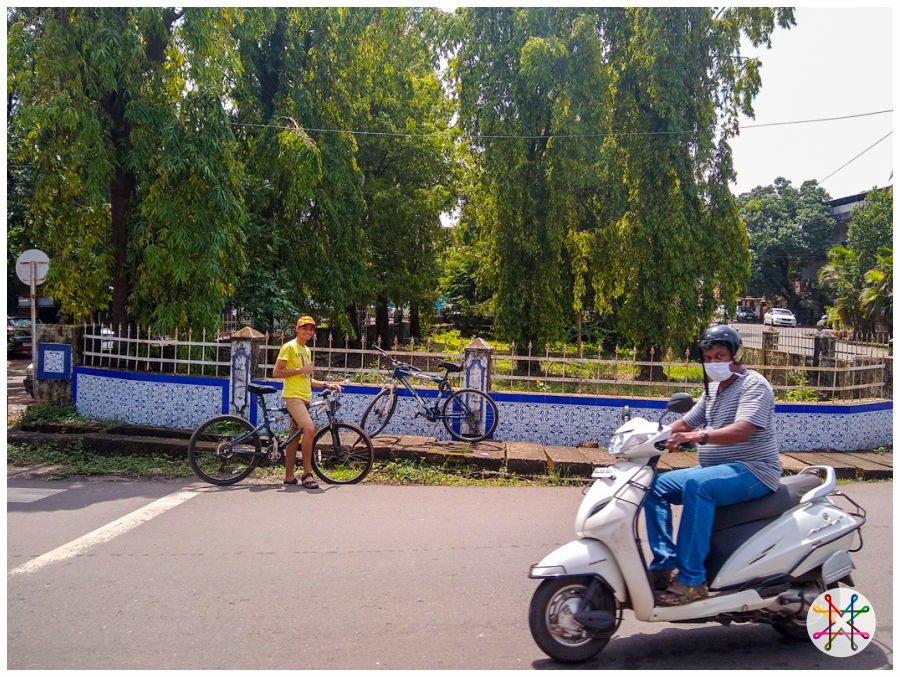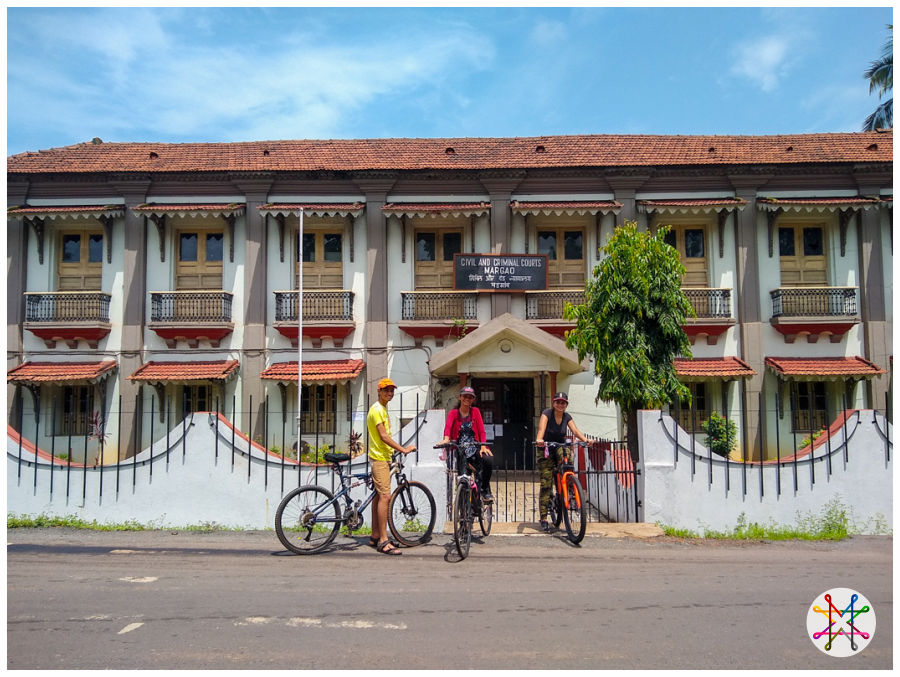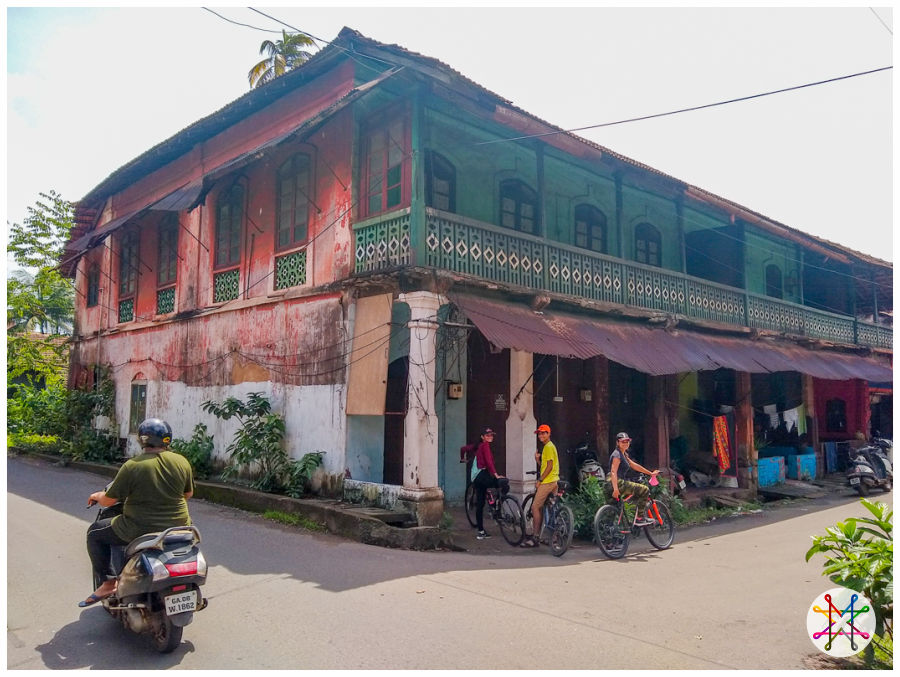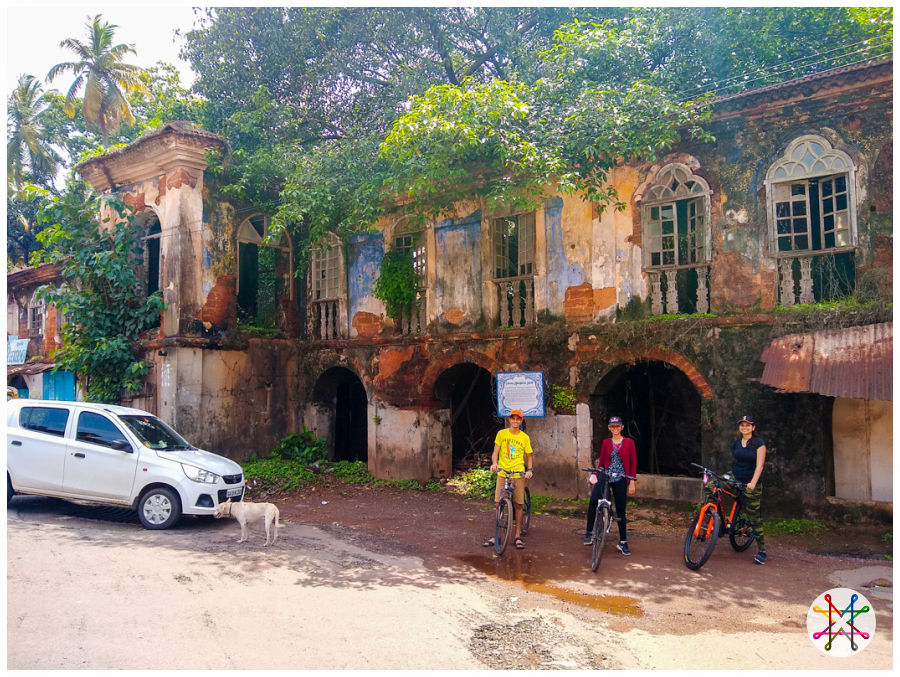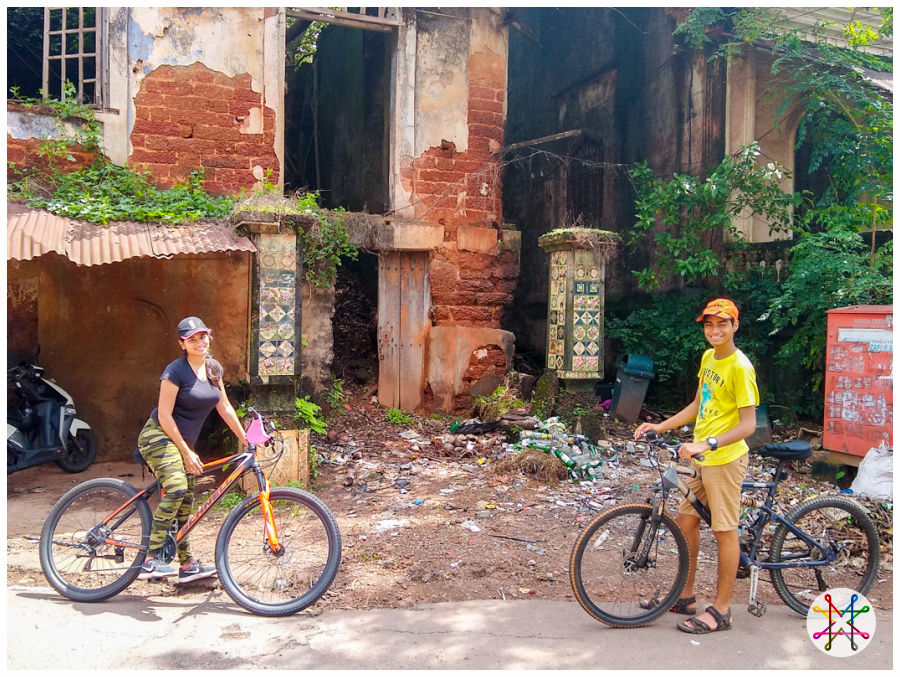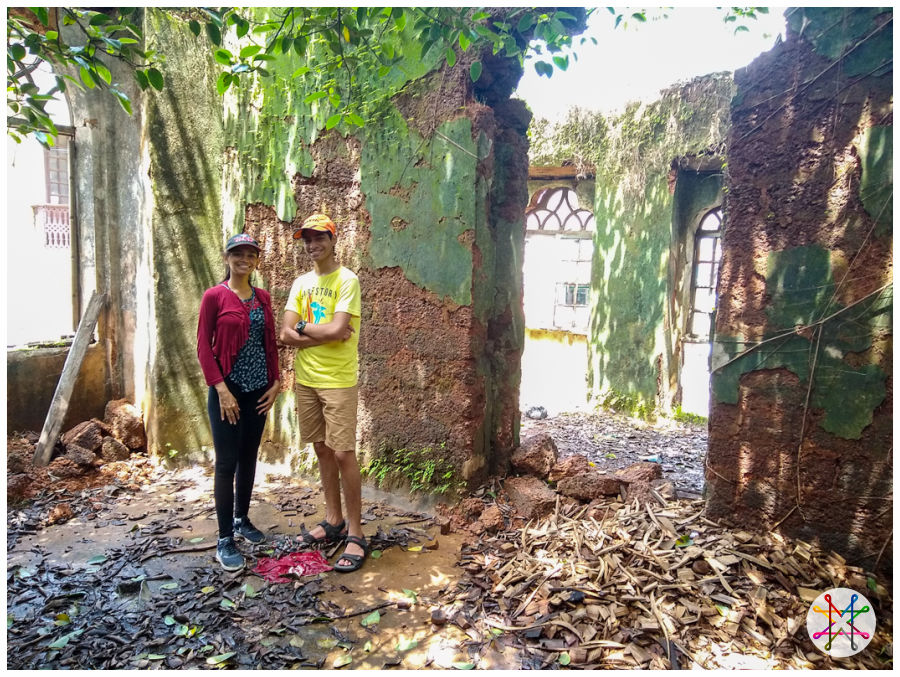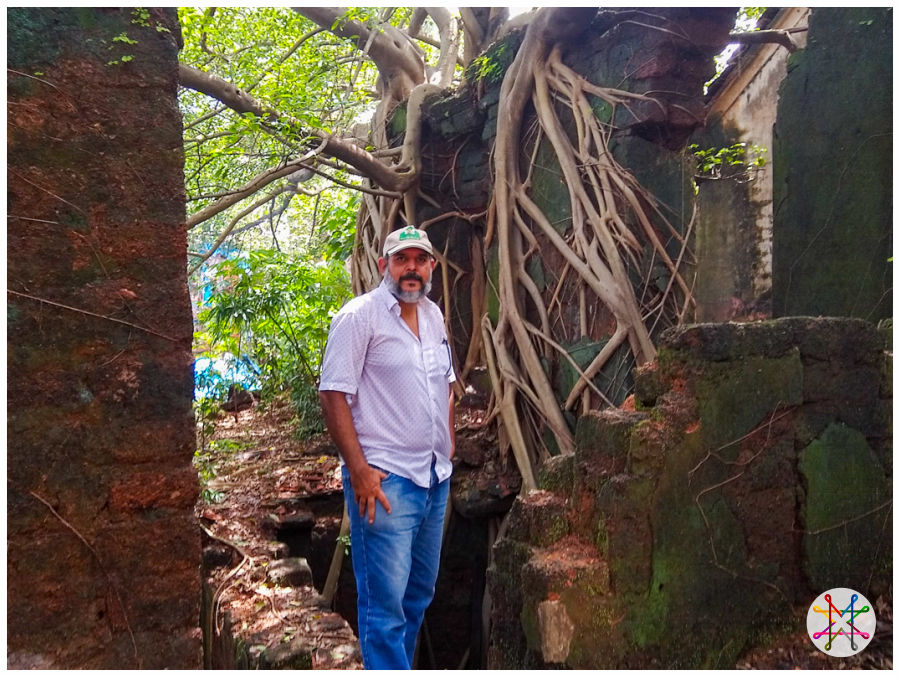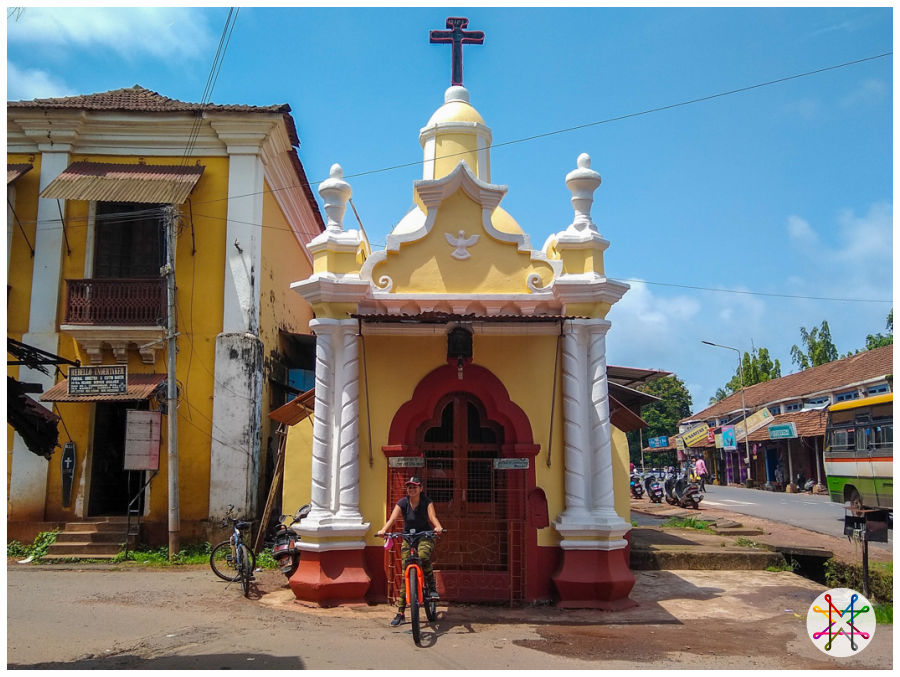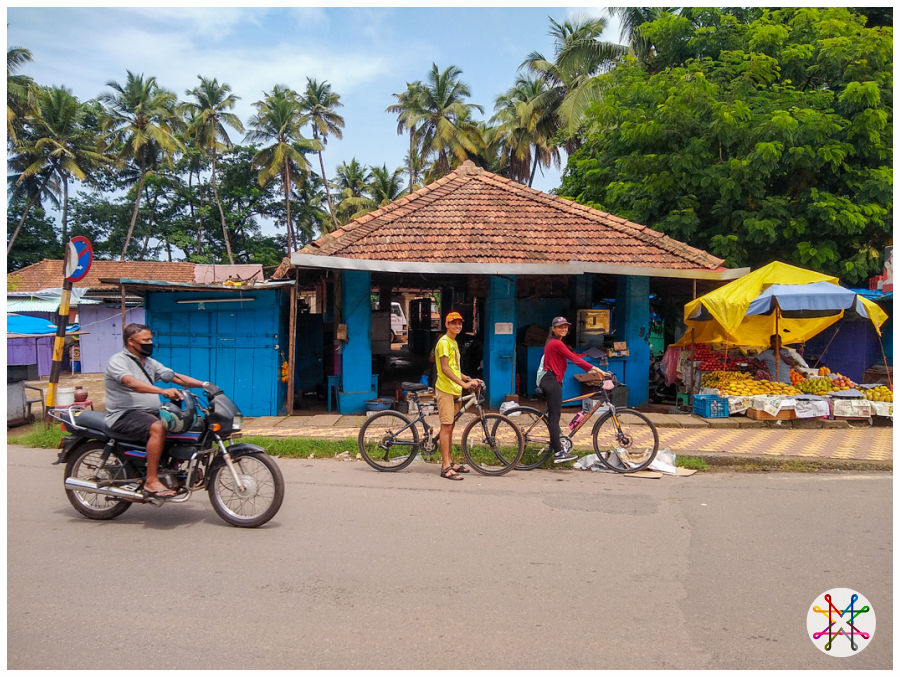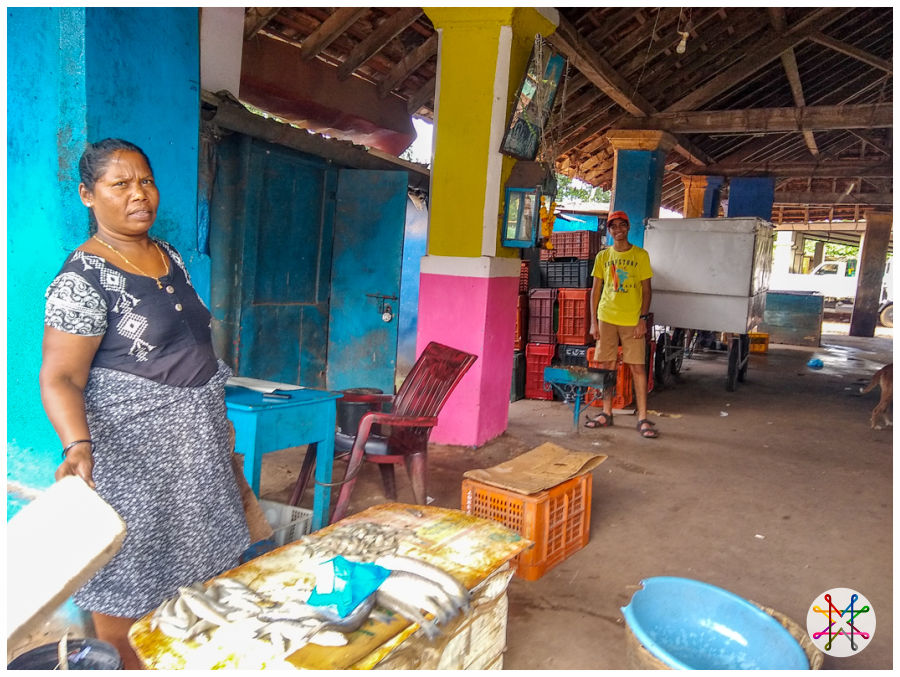Hi All,
We are Rubaica, Ronit and Nichole. Join us as we cycle from New Market to Old Market sharing Margao’s wonderful history and heritage with you. Thanks to Lynn and his forum – My Margao.
Let’s start with a bit of history of Margao.
On 3rd April 1778, Margao – one of the 66 villages of Salcete, was elevated to the category of a town through a Royal Decree of the Portuguese Queen Dona Maria I. This proclamation was signed after receiving a petition from the Senate of the chamber of the province of Salcete, by Feleciano Ramos Nobre Mourao on behalf of the Queen at the Palace of Nossa Senhora of Ajuda.
source: Memoria Descriptiva da Villa de Margao by Jacinto Caetano Barretto e Miranda. 1859
And there are three possible etymologies of Margao.
1. Mharuganv – village of demons
2. Mathgram – village of Maths (monasteries)
3. Maravile – marvellous village
pic: Aerial View of Margao, circa 1950
New Market – our starting point.
This market is named after Afonso de Albuquerque who led the conquest of Goa in 1510. The plaque above was installed to commemorate the opening of the market on the 5th of December 1889.
With the area at Old Market already congested, the old Municipal building crumbling and also the opening of the railway line and station in 1887; the members of the Municipality led by Dr. Jose Inacio de Loyola of Partido Indiano decided to develop this area by building a new larger market and a new Municipal building.
Margao Municipality building – our next stop.
It was inaugurated on 30th April 1905 and completed 115 years this year.
The foundation stone was laid on the 27th of September 1902 and the construction began on a memorable note… A damsel from Comba took up the challenge and a handsome cash prize, for lifting the new building’s foundation stone and carrying it to the pit, dressed in her birthday suit – in the appreciative presence of his Excellency the Governor Col. Eduardo Augusto Rodrigues Galhardo and a huge smiling crowd of pakles and nodding Salcete gentry.
This imposing new municipal building was built by Caetano Camillo da Silva from Orlim and to construct it, the Governor imposed heavy taxes in Salcete. Such was the public resentment of the steep taxes that Arnaldo de Menezes from Raia composed the mando – ‘Kitlem odruxtt amchem’.
pic: the Municipal building – circa 1940
At the entrance of the Margao Municipal building we found this GTS marker for Margao.
The Great Trigonometrical Survey was a project which aimed to measure the entire Indian subcontinent with scientific precision. The actual work of trigonometrical survey commenced on 10th April, 1802 by measurement of base line near Madras by Colonel William Lambton under the auspices of the East India Company.
On June 20, 1964, Goa woke up to the sounds of a series of baffling bomb explosions. The first target was the warehouse of the department of civil supplies and price control in Cortalim. A little after 5 am, the third bomb went off here, unhinging this window.
During investigations, it was found that the Portuguese government, along with expatriate Goans, had hatched a plan to overthrow the Indian administration in Goa, Daman and Diu.
The police charged 17 people with criminal conspiracy for waging war against the Government of India to free Goa from Indian rule. While Olav Noronha Fernandes, a radio technician of the wireless centre of the post and telegraph department, Bambolim, was sentenced to three years simple imprisonment, nine accused in the case were acquitted for lack of evidence. Casmiro Monteiro – a notorious ex-police officer was one of the prime suspect who was never caught.
Across the road is the entrance to the Municipal Garden, unfortunately due to the Covid pandemic the gates were locked, inside this nice garden are four busts of prominent Goans.
These photos were clicked by Lynn on an earlier heritage walking tour.
The first bust as you enter is of Luís de Menezes Bragança, a prominent Indian journalist, writer, politician and anti-colonial activist from Goa. He was one of the few Goan aristocrats who actively opposed the Portuguese colonisation of Goa.
During his lifetime, Menezes Bragança was widely hailed around the Lusosphere (Portuguese speaking world) as “O Maior de todos” (“The Greatest of all Goans”) and in the Indian mainland as “The Tilak of Goa”.
On 22 January 1900, together with another Goan writer Messias Gomes he co-founded O Heraldo, which was the first Portuguese language daily in Goa.
Menezes Bragança was the first person to call for an independent Goa and as such, was generally hailed as the “father of Goan unrest”.
This bust was sculpted by Antonio Piedade da Cruz (c. 1895-1982), in the 1960’s. It was commissioned by the Goa Govt. An identical bust he made is installed in the garden outside the Menezes Bragança hall in Panjim.
Cruzo as he was popularly called was born in Velim and educated at the Sir Jamsetjee Jejeebhoy School of Art, Bombay. He was well known as one of Mumbai’s most sought-after portrait painters in the 1930s and 1940s, but he also produced equally fine sculptures and symbolic paintings, especially those of political nature. He had his studio at Brabourne Stadium in Bombay and is said to have played a key role in securing the site for the Cricket Club of India.
above pic: Antonio Piedade da Cruz at his studio in Bombay.
Bust of Luís de Menezes Bragança in Panjim.
A prominent Madgaoncar, Agostinho Vicente Lourenco was a great scientist, who worked in Germany, France and Portugal. He was born on 8th March 1826, later we will pass by his ancestral house and we will tell you more about him.
This bust was made by Constancio Fernandes (brother of Lourenco Fernandes – founder of Lorenz Studio) a renowned Goan Artist and Sculptor. The bronze bust of Padre Jose Vaz (displayed in the Margao Church Square) and the terracotta murals at the entrances of the Administrative Building of Salcete Commnidade and Mapusa market were also created by him.
The Administrative Building of Salcete Commnidade.
Terracotta mural.
Bust of Padre Jose Vaz in the garden opposite the Holy Spirit Church.
Dr George Barreto, one of the best-known municipal presidents of the Salcete Camara. The municipal square (garden with roads on all four sides) was planned and executed during his tenure in the 1940s. The Square (around municipal garden) was named after him posthumously.
Unfortunately these sign boards were removed and never put back when L&T did the underground electrical cabling.
The last and fourth bust is of Doctor Minguel Loyola Furtado.
Dr. Loyola Furtado was the first Loyola-Furtado of the Furtados of Chinchinim, who married Maria Julieta de Loyola of Orlim, niece of Jose Inacio de Loyola (Partido Indiano) a giant political figure of the times. Born to Cristavao Gabriel Furtado and Maria Leonor de Loyola Furtado, he was a well-known and much-loved doctor in Salcete, always dedicated to his patients.
He led the political party, Partido Indiano, often referred to as the Popular Party. During Portuguese rule, the party was the principal opposition to the ruling party, the Partido Ultramarino. He was the owner and editor of one of Goa’s oldest newspapers, “A India Portuguesa,” which was published from Chinchinim. The newspaper was widely read in Goa and Portugal, and it was through it that Goa-related issues were frequently raised in the Portuguese Parliament. The publication served as the official voice of the Partido Indiano.
Prior to his death, he established the Luminary of St. Sebastian at Chinchinim, during a period when the terrible Spanish Flu was claiming thousands of lives in Goa. St. Sebastian is the patron saint of plagues and other dreaded diseases. He died of the Spanish Flu in 1918, which he contracted while caring to a patient in Cuncolim. Upon his death, the Patriarch of Goa and the East Indies declared that his grave would be a permanent one and would never be opened, and it was placed right in front of the altar in the Chinchinim Cemetery.
On the occasion of his 50th death anniversary on September 26th, 1968, the citizens of Margao organised a commemorative session in the Margao Municipal Hall wherein the Governor of Goa presided and various prominent personalities spoke on the life of Dr. Loyola Furtado. The Young Catholic Students Union (Y.C.S.U.) published a magazine in commemoration of Dr. Loyola Furtado’s anniversary.
The road from ICICI Bank upto Gomant Vidya Niketan in front of Margao Police Station is named Dr. Miguel de Loyola Furtado. The Dr. Miguel de Loyola Furtado Children’s Park in Chinchinim was built on land donated by his family along the principal Assolna-Margao road, and a bust was erected there by the residents of Chinchinim, together with friends and fans.
He also wrote “O Grande Apostole,” a book about the life of St Francis Xavier.
The road from ICICI bank to the Police station is named after him. This road sign board is missing too, so have all the others across Margao.
Casa Penguim de Gelados (Penguin Restaurant) was started in the 1950’s by a Scot named Godfrey Hoare. He had escaped to Goa after he eloped with the wife of a high ranking Indian army officer for whom he served as an ADC.
Aga Khan Children’s Park
The Northern segment of the Margao Municipal Garden was developed by Abdul Javerbhai Mavany in memory of his late father Javerbhai Ramjee. It was named after H. H. The Aga Khan who visited Goa just before liberation. The park was inaugurated by Goa’s last Portuguese Governor General, Vassalo e Silva, on 25 December 1959.
The flowers of the Golden Shower Trees (Cassia fistula) which adorn the park are the floral emblem of the state of Kerala and the national flower of Thailand. The entire garden turns golden and looks wonderful when the trees are in full bloom.
Margao Post Office – dropping off some postcards and letters.
Since we are near the post office, let us tell you about Jacinto Caetano Barreto e Miranda.
On 21 May 1871 the Portuguese Governor General Jaunario Correia de Almeida appointed a three member committee to suggest reform of the postal service. The committee comprised of Jacinto Caetano Barreto e Miranda, Joaquim da Silva Heitor and Engg Jose Castel Branco. The committee’s implemented recommendations include the stamp having the name Servico Postal, India Portuguesza and the price printed on them.
He was also the administrator of the Salcete Commnidade and has authored books on Margao and Goan history, unfortunately he died young, in his late 30’s.
And did you know we are the second great grandchilden of Jacinto Caetano Barreto e Miranda?
Photo of the post office. Circa 1930
Gomantak Vidya Niketan – is situated at the start of Abade Faria road.
When Portugal became a republic in 1910, it marked the end of religious discrimination in Goa. The residents of Margao used the new found liberty to establish Gomant Vidya Niketan. It started off as a humble library known as Saraswat Brahman Samaj in 1912 and then diversified. The library continues on the ground floor with an amphitheatre upstairs.
The old Gomantak Vidya Niketan library before the present building was built.
Cycling down Abade Faria road we stopped at this building where the social club ABC Club is situated.
If anyone knows what ABC stands for, please let us know.
Bambi School – this is where Ronit and Nichole, learnt to read and write. The school was started by late Aurelia and Amelia (loving called Mamelucha by all) in 1978 with 6 students.
This is their house – the Miranda House. Lynn tells us that the Miranda part of our surname comes from an ancestor from this house. Roque Mariano de Miranda (Lynn’s second great grandfather, our’s third and father of Jacinto who we mentioned before) was a son from this house who married Aurora Barreto and settled in their new house in Borda, and now you know the reason why we have two surname.
That’s the ancestral house of the Portuguese Prime Minister António Costa.
These are some photos when PM Antonio Costa paid a visit to his ancestral house, on the 12th of January 2017, on the second day of his two-day tour to Goa, where he spent time with his cousin and her family.
The beautiful house of Agostinho Vicente Lourenco, he was the son of Doctor Nicolau Lucio da Conceição Lourenço and de Maria Aurora Alvares.
He graduated in Medicine and joined the teaching staff at the Escola Médico Cirúrgica de Goa in Panjim. In 1848, he travelled to Lisbon with a bursary from a Goan private association in order to continue studies in Paris and shifted focus to organic chemistry. He published a large volume of papers and journals on his scientific research.
At the Academy of Sciences in Lisbon there is a bust of Lourenco along with Lavoisier, Liebig, Hoffman and other famous scientists.
A V Lourenco and his research journals.
House of A V Lourenco, photo clicked by Lynn couple of years back for the Houses of Margao project he did.
To commemorate the 450th anniversary of Portuguese India, the Portuguese government released, on 24th March 1956, a series of stamps honouring prominent Goans, one of them featured A V Lourenco.
The Primary School near Holy Spirit church and the road in front of it is named after A V Lourenco too.
Ronit noticed this cute metal frog on the white door of Monte de Silva’s house. These frog knockers were used as bells, before the electrical ones were invented.
Moving further down we came across these beautiful green grills. Lynn told us that they are made of porcelain and were imported probably from Macau or China.
Júlio Francisco António Adeodato Barreto (3 December 1905 – 6 August 1937), better known as Adeodato Barreto was born in this house, his mother was a Colaco from this house. He was a Luso-Goan poet and writer. Though he lived little beyond thirty years of age, Barreto is a major name in Goan letters and his works Civilizacao Hindu (Hindu Civilisation) and O Livro da Vida (The Book of Life) have an unquestionable place in Goan literary history.
This plaque was installed in honour of Adeodato Barreto, by the wife of the President of Portugal, Mario Soares during their visit to Goa.
The road in-front of old Presentation school is named after him too.
And at the Park of Poets in Oeiras, Portugal there is an installation erected in his honour.
The first printing press landed in Goa on 6 September 1556, much before it came to other parts of India and Asia. On 6 April 1859, Bernardo Francisco da Costa (who was a member of the Portuguese Parliament from 1853 to 1869) started Goa’s first privately published newspaper “O Ultramar”. It was a weekly that was printed at his own printing press in his house. The newspaper was forced to shut down in 1942 due to the strict censorship imposed by the then Portuguese dictator, Salazar.
In 1885 he also established the Fabrica de Conservas Costa & Co (Costa Canning Factory), the first canning company in Goa. They packed fruits and spices for export to Portugal.
O Ultramar dated April 1942
Instituto do Abade Faria, later christened as Externato Liceal do Abade Faria – a Portuguese Lyceum Course school, was founded by Prof. Joaquim Silva here. Student studied from Primerio to quinto ano (equivalent to std 5th to 12th) and the school ran till the mid sixties.
This bungalow is now owned by the Verlekar family.
The Shree Ram temple.
Belonging to the Naik family, a part of this house constitutes Damodar saal in dedication of Lord Dambab.
After the destruction of the temples by the Portuguese in 1566 there were no Hindu temples left in Margao. Naik Shankahwalkar family consecrated a coconut brought from their gramadevata, Lord Damodar from Zambaulim, to be worshipped in the Sal (hall) of their ancestral house.
Damodar Sal became the centre of the religious life of the Hindu community in Margao until Hindu temples were built in the town at a later stage. However, Domodar Sal today is both sacred and a public place of worship.
On October 27, 1892, Subrai Naik hosted Swami Vivekananda at his home, when he visited Goa before his trip to the USA in 1893 to represent India and Hinduism at the Parliament of the World’s Religions in Chicago.
Swami Vivekananda visited Goa for two reasons: to take a tour of temples in Goa and secondly to research about Christian history, theology and philosophy. Swami Vivekananda was shown various temples at Ponda – the Shantadurga temple, Kavlem; Mangueshi temple, Mangesh and Mahalsa temple, Mardol. At the Rachol Seminary while researching Christianity and Christian viewpoints, Swami Vivekananda read a variety of books in different languages; had lengthy interactions with the rector, priests, teachers and students of the seminary for around three days.
This is the room where Swami Vivekananda stayed and the Naik family have maintained it as it was. Lynn clicked this photo when Pradeep Naik a descendent of Subrai Naik graciously opened and showed him the room.
This garden is named Largo de Republica (Republic Square) to commemorate the 5 October 1910 revolution that overthrew the centuries-old Portuguese Monarchy and its replacement by the First Portuguese Republic. Our grand father told us it was a beautiful well maintained garden during his younger days. However, now the big brains of Margao have turned it into an eyesore.
The Civil and Criminal Court was started here after the building was renovated in the 70’s. In the 1930-40’s Fatima Convent School functioned here and a part of the building housed a jail too. Inside you will find a chapel dedicated to St Francis Xavier.
If you know when this building was built or its purpose, please let us know.
This was the shelter for the guards protecting the jail.
This quaint bungalow, built by Afonso Ligorio Araujo in 1936, was Margao’s first RCC structure. The steel used in its construction was purchased when on completion of Borim bridge the excess steel was auctioned off.
The church square and the old market was Margao’s center and in 1770 this Camara building was built for the entire taluka. A century later the building was sold. It was brought by Afonso Ligorio de Araujo for Rs. 4015/- on 7th February 1909.
On the side of the building we noticed these two ceramic tile cladded pillars. This used to be the display showroom for decorative ceramic tiles from across the world that were imported and sold here by Afonso Ligorio de Araujo.
The building is now in ruins and might be an interesting location for a horror movie.
Lynn is ready to play the role of a villain…….effect of lockdown
Cidas Almas Chapel was built in memory of the 23 people killed in the 21st September 1890 massacre of people protesting a rigged municipal election.
We ended this cycle tour with a visit to the Tinto at the old market which was deserted due to the pandemic. This market was named after Vasco da Gama – the first European to reach India by sea.
Ronit decided to help the lone fisher woman by buying some fish while maintaining the required social distance.
Thank you everyone for adventuring along on our little cycle ride, hope that you enjoyed it as much as we did.
Lynn has started the MY MARGAO forum to document Margao’s history and heritage for future generations just like our second great grand father Jacinto Caetano Barreto Miranda did.
If you have any information / documentation you would like to share, you can contact him on 9822151419 or lynn@barretomiranda.com, and you can follow My Margao on social media at:
• fb.com/mymargao
• instagram.com/mymargao
!~!~!~!~!~!~!~!~!~!~!~!~!~!~!~!~!~!~!~!~!~!~!~!~!~!~!~!~!~!~!~!~!~!~!~!~!~!~!~!~!~!~!~!~!~!~!~!
This travelogue was put together and shared on the Let’s Travel whatsapp group on 28th June 2020.
Let’s Travel is a whatsapp group created by travel enthusiasts to share their travel stories and memories.
Its an open group, to join click the link:
https://chat.whatsapp.com/ITeMEV5DQkr8SiPP7Wak5R
#travelstories #whatsappstories #letstravel

